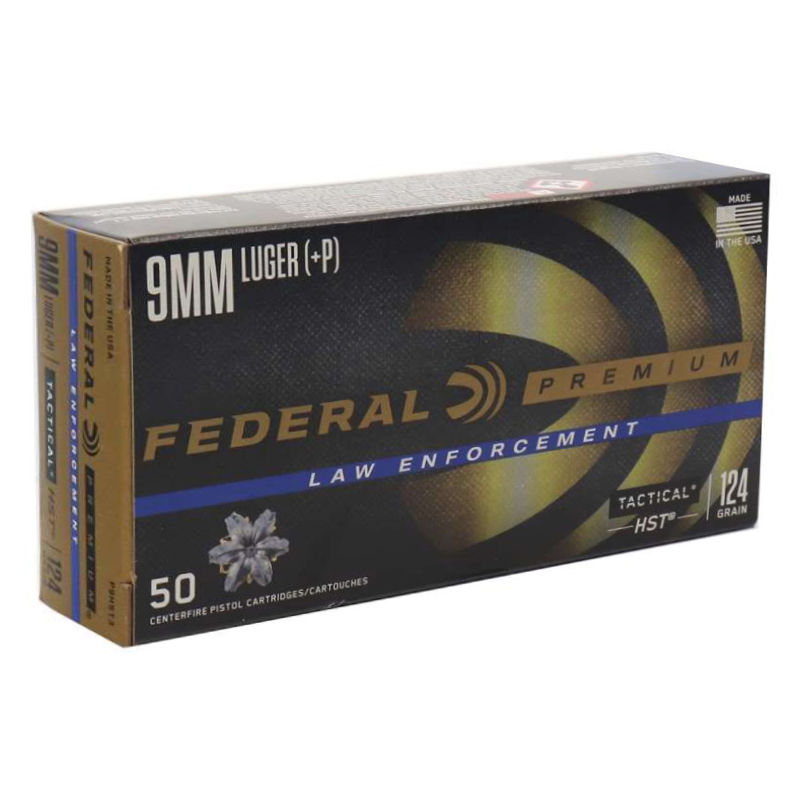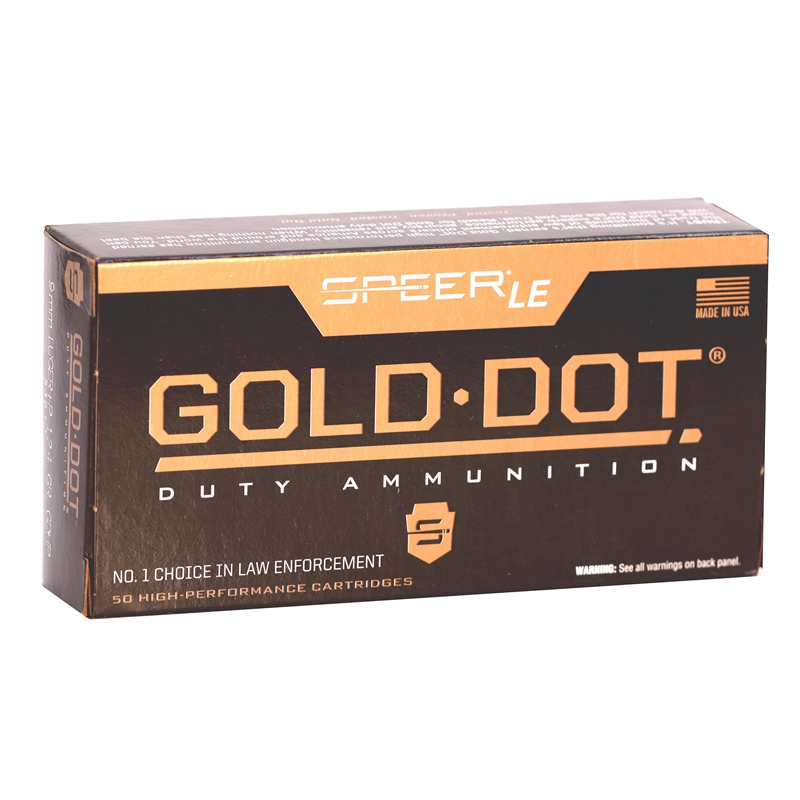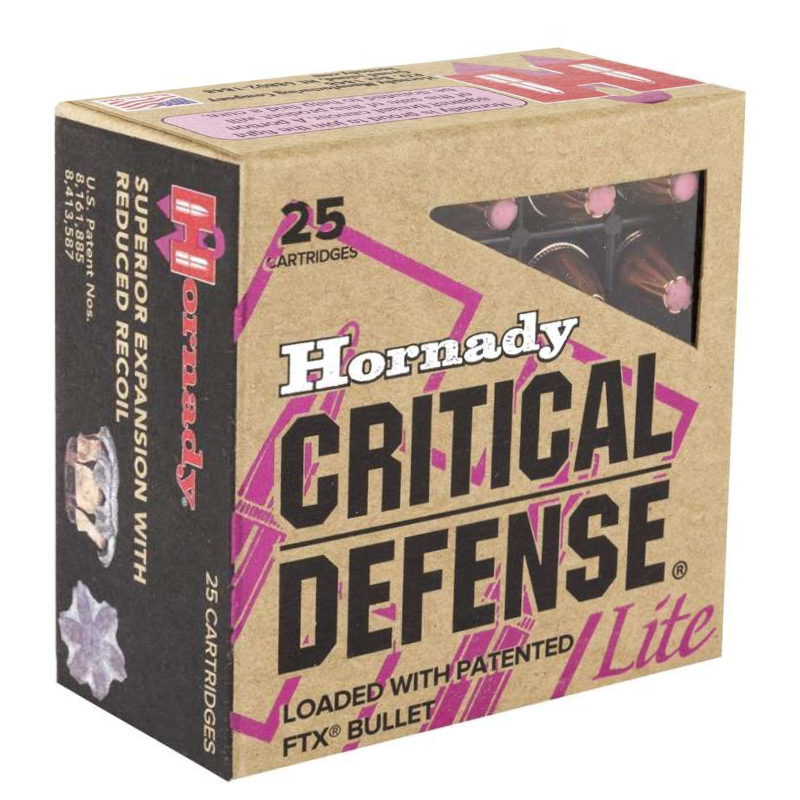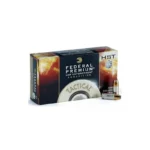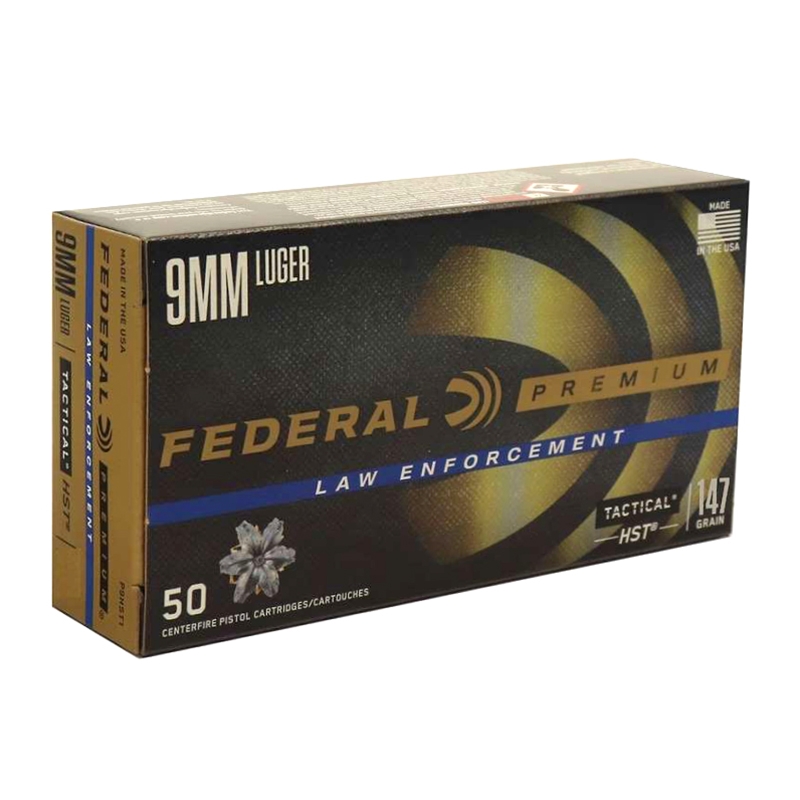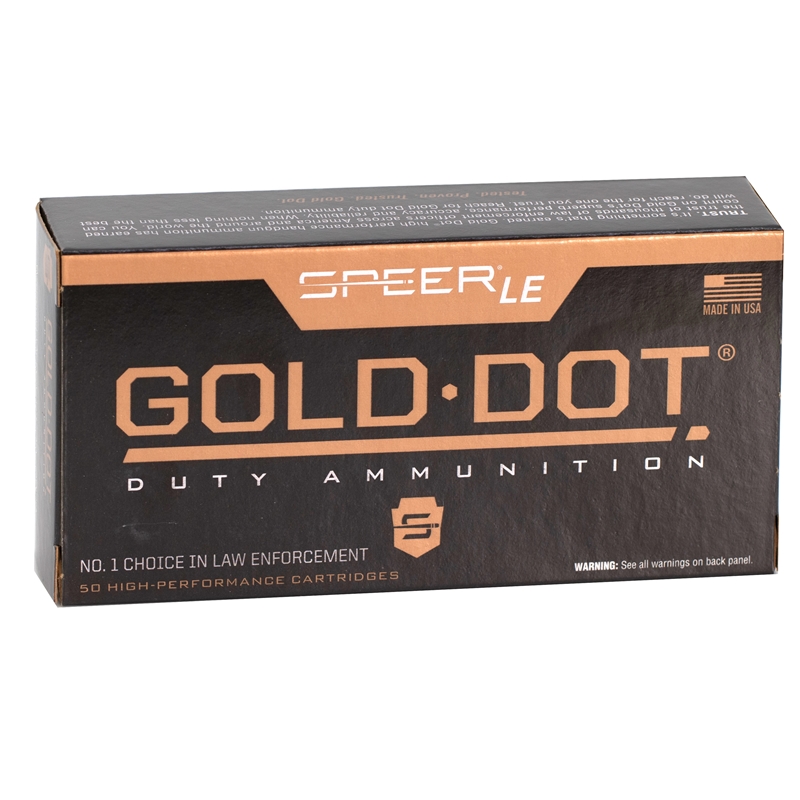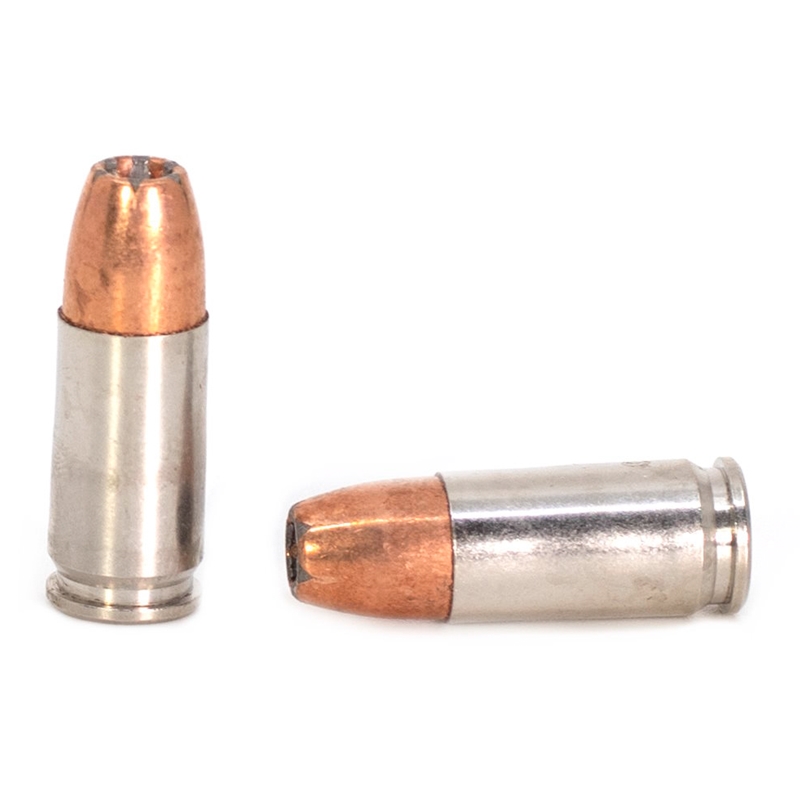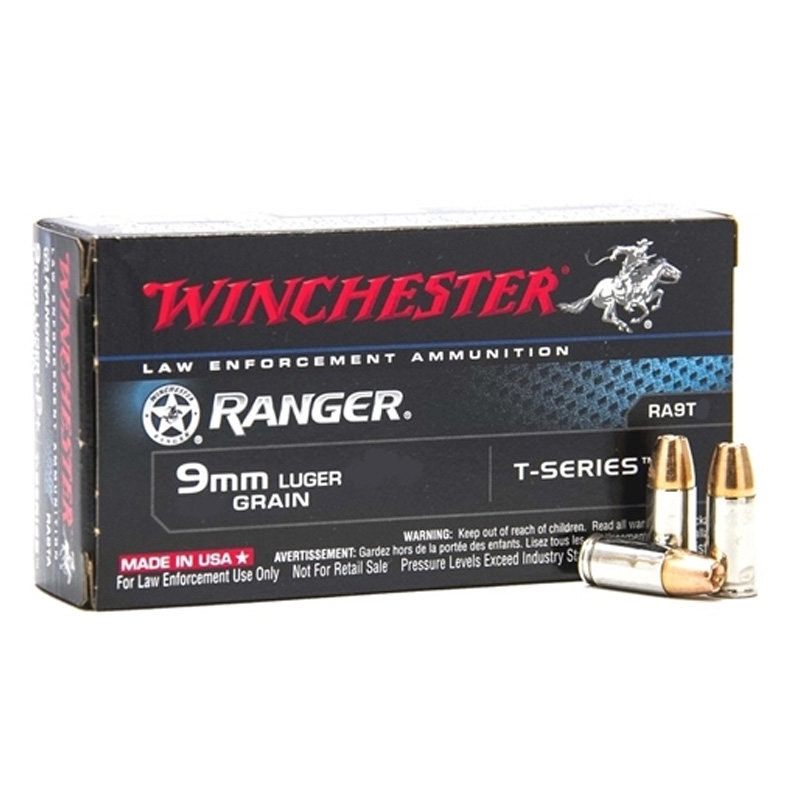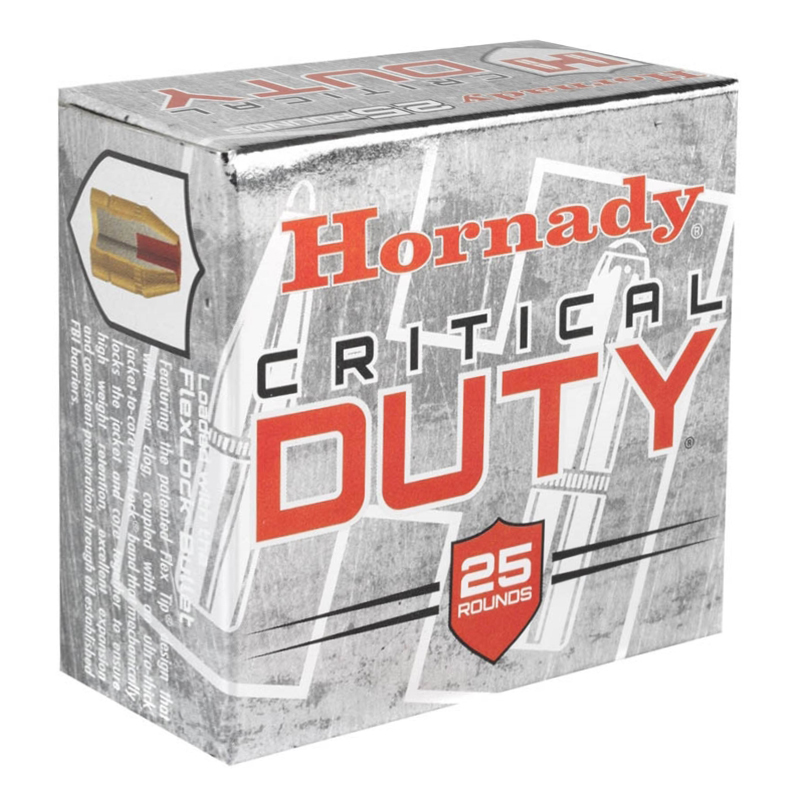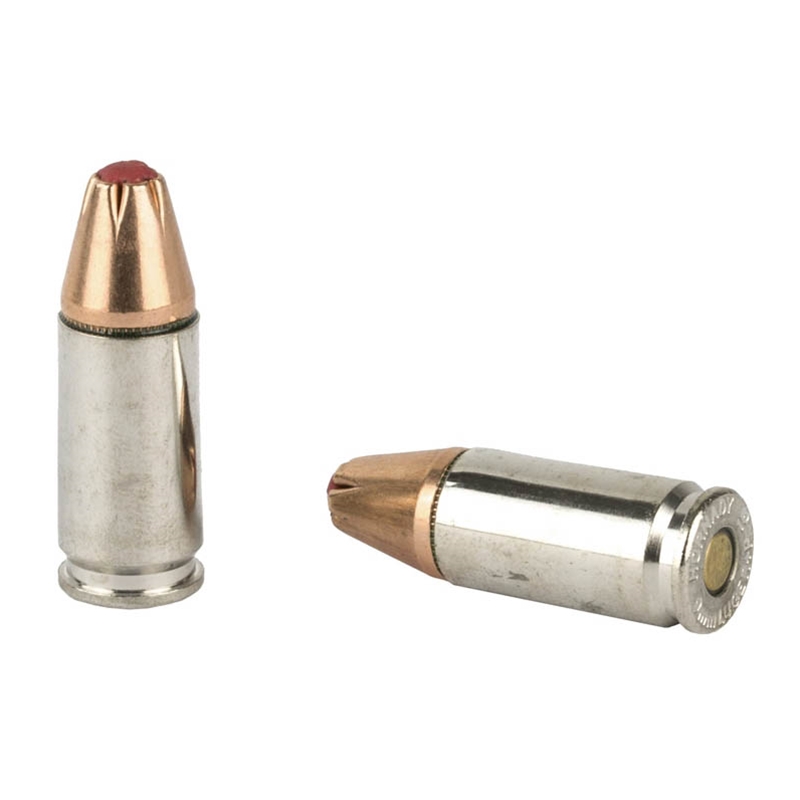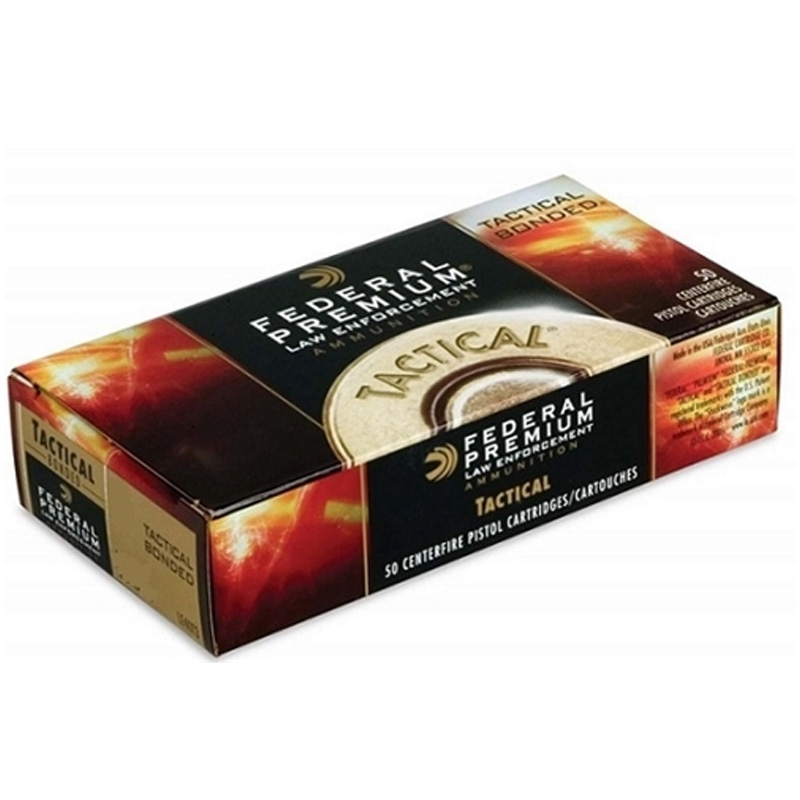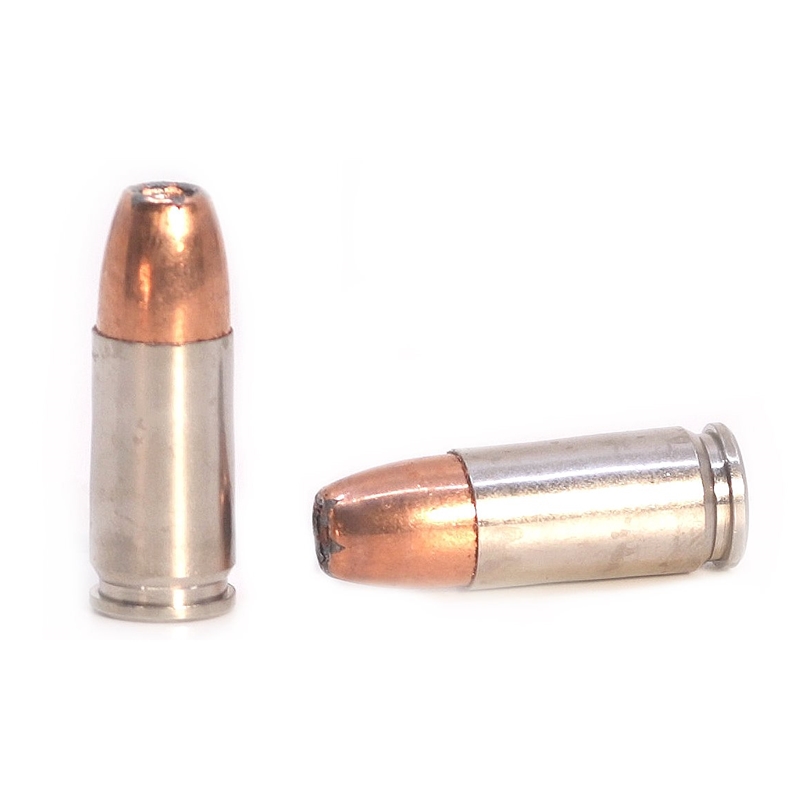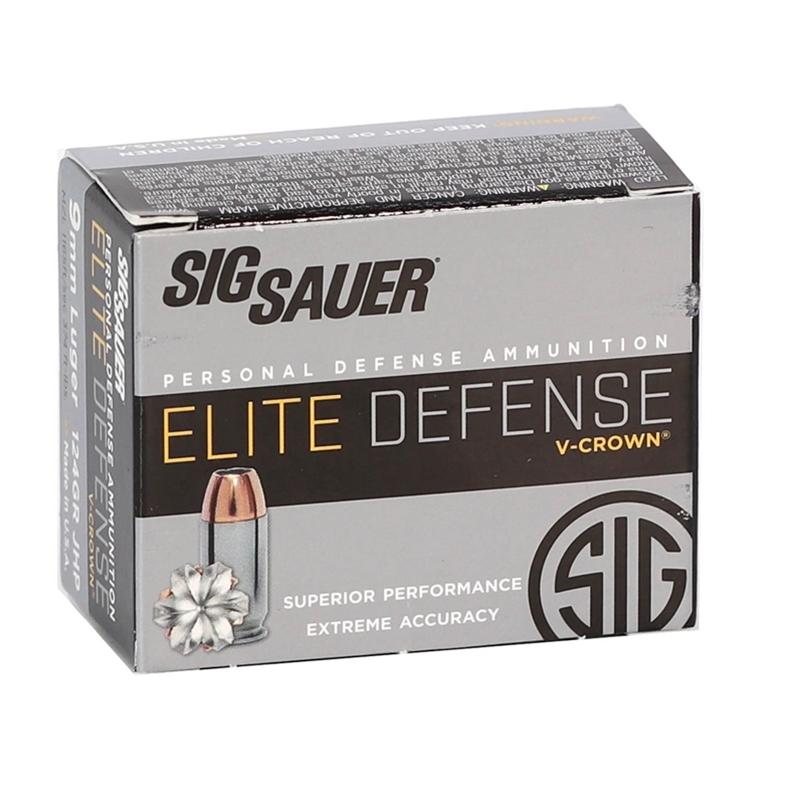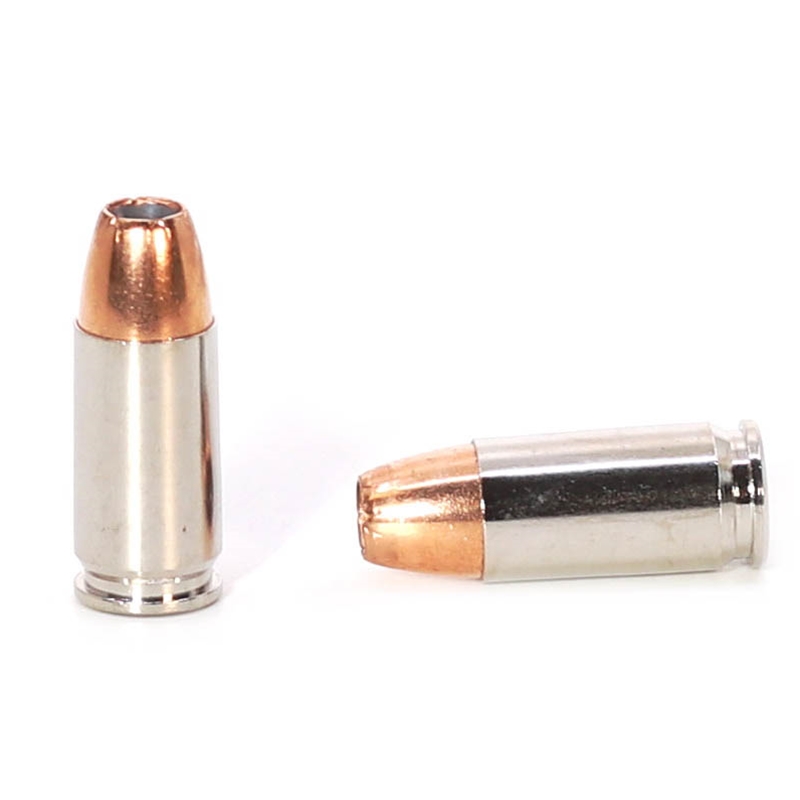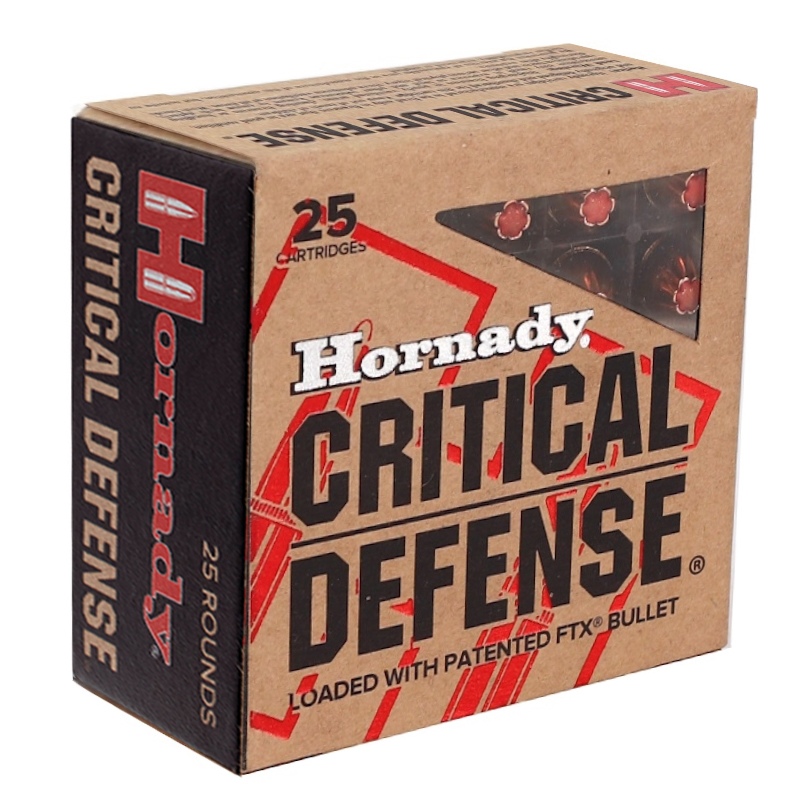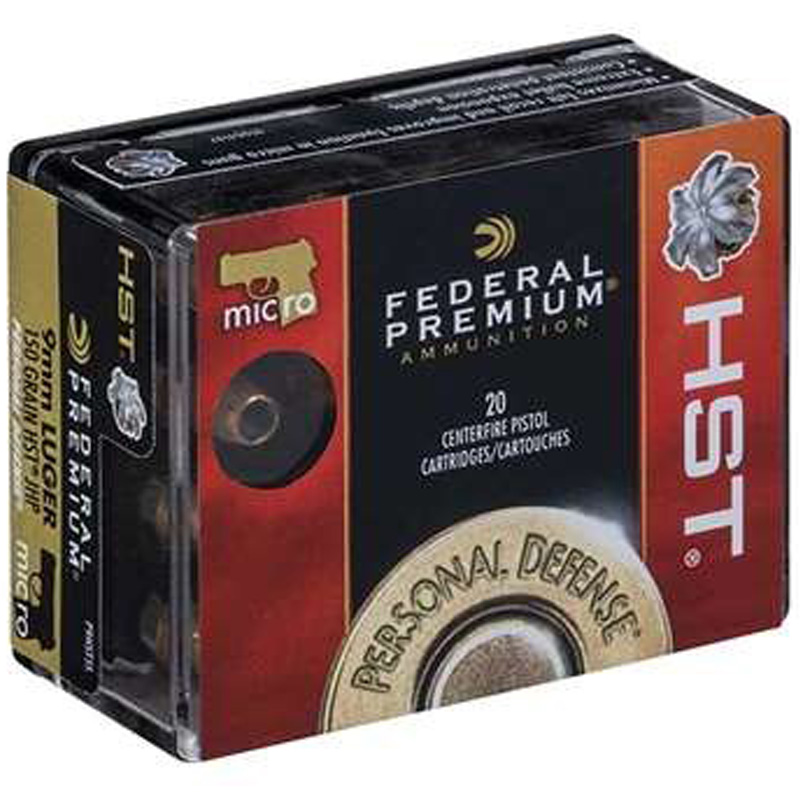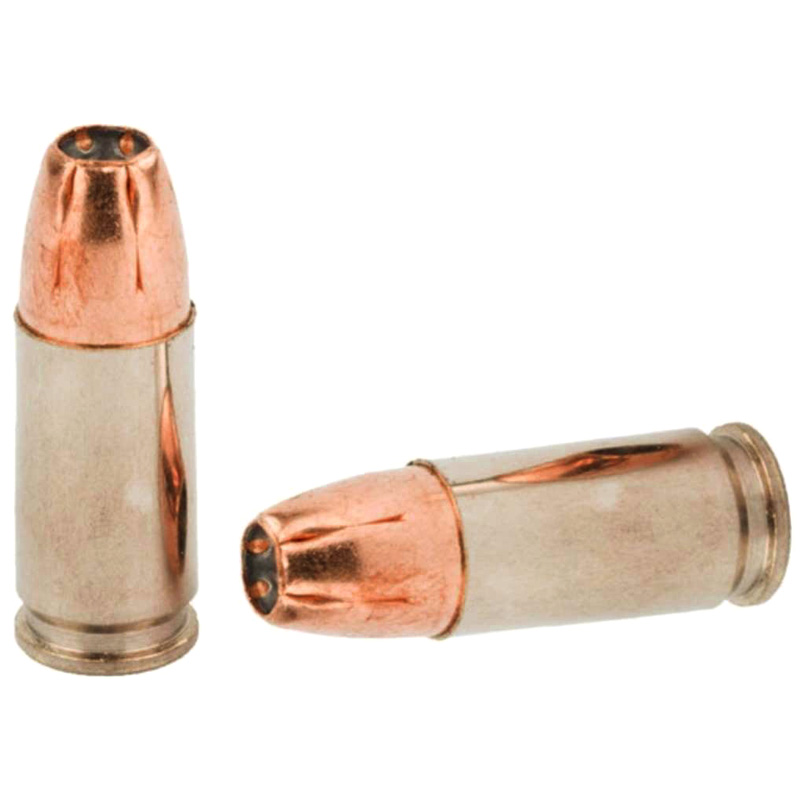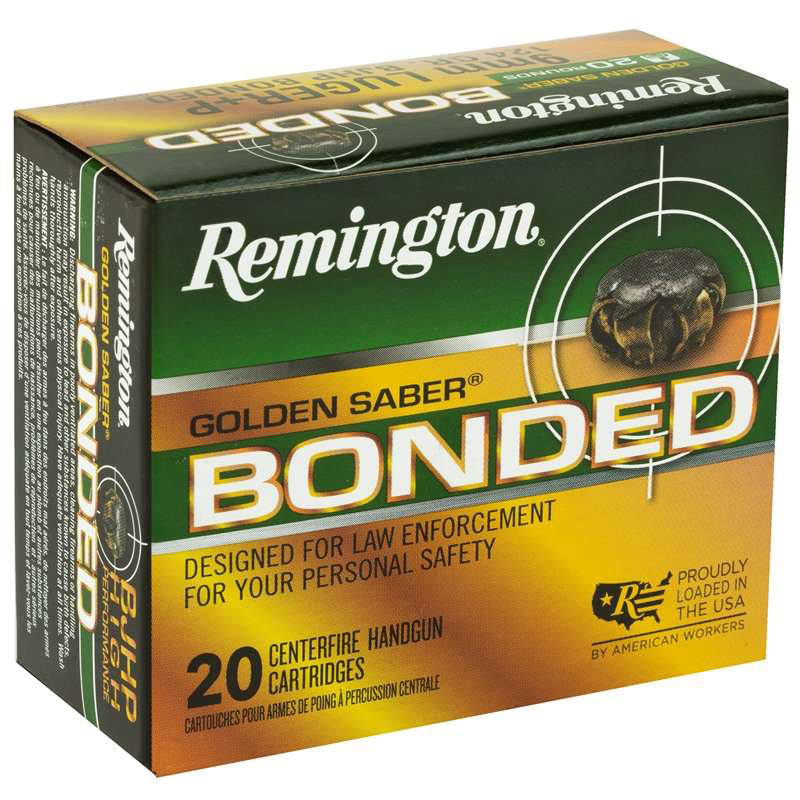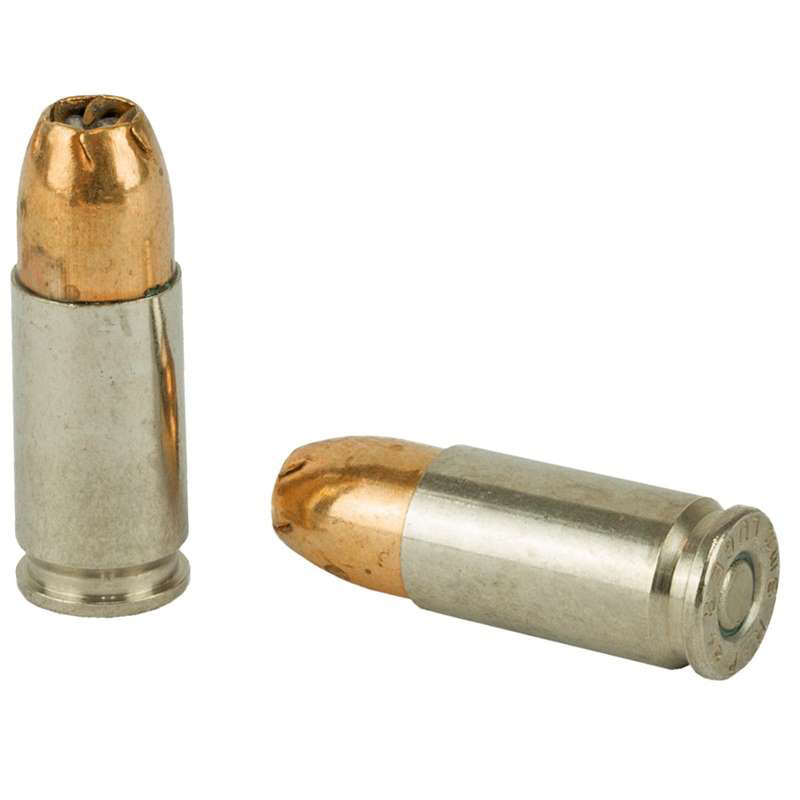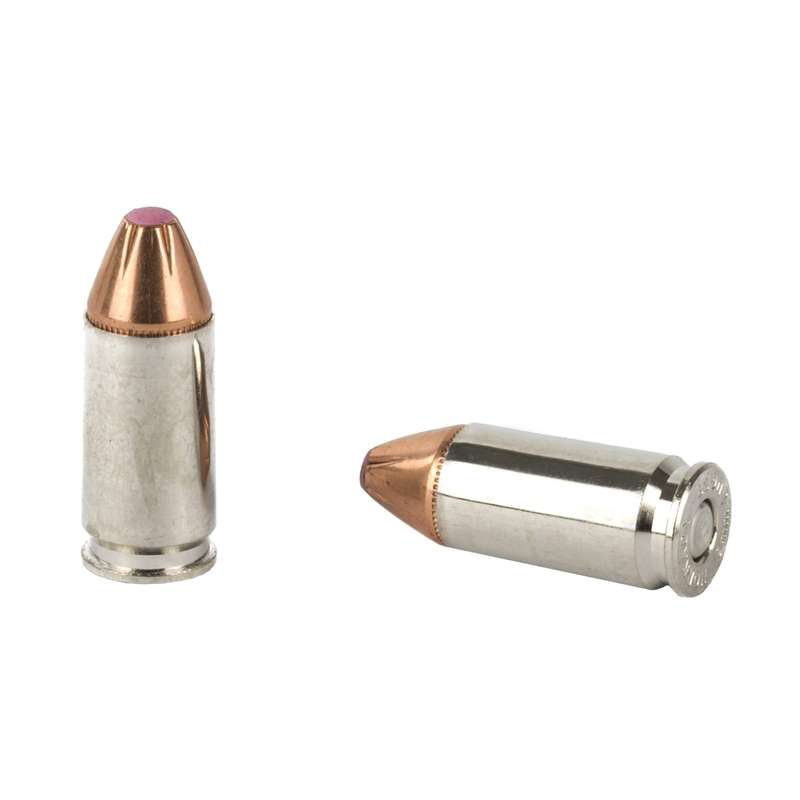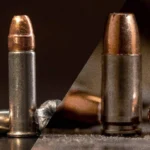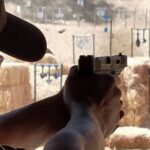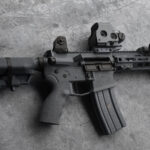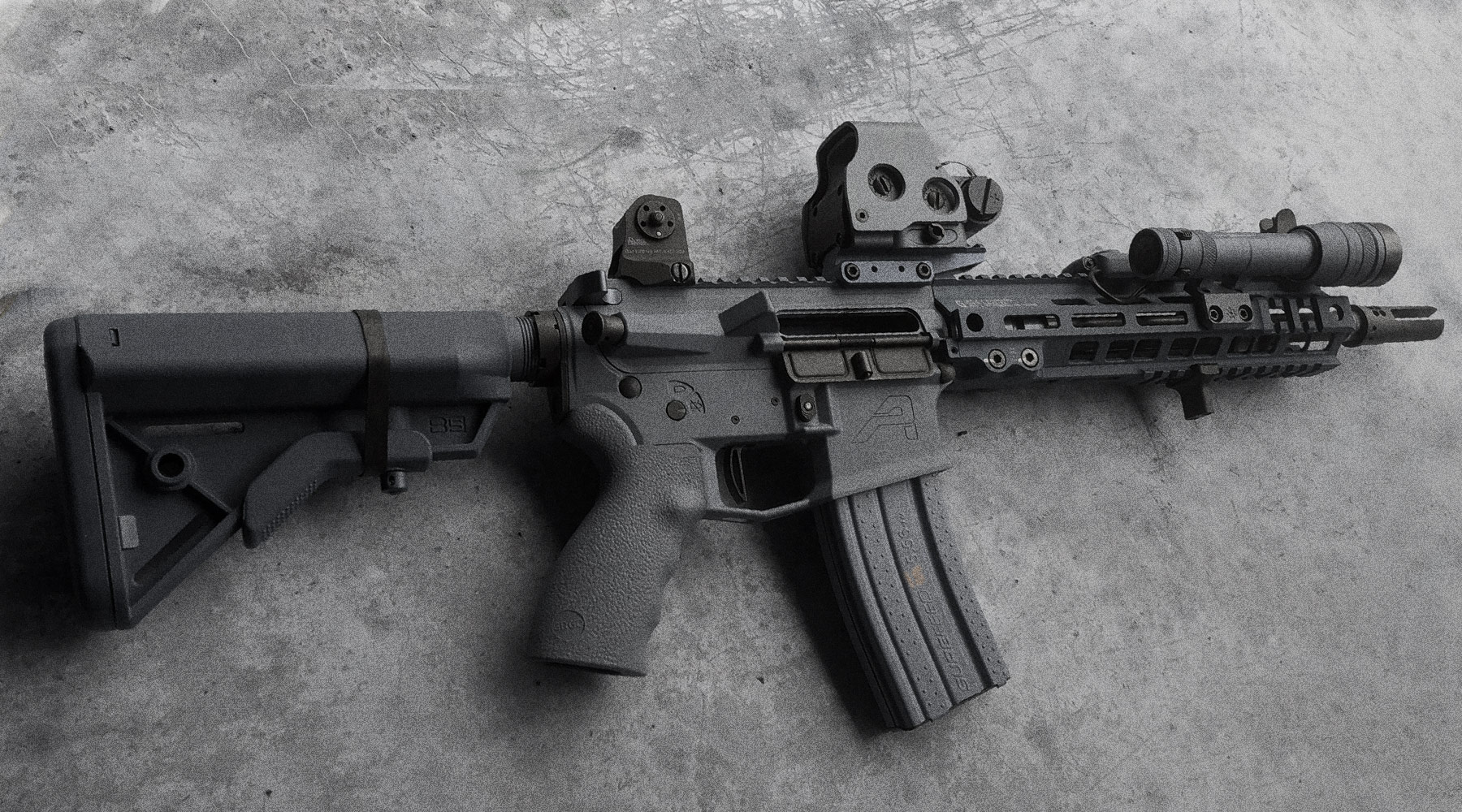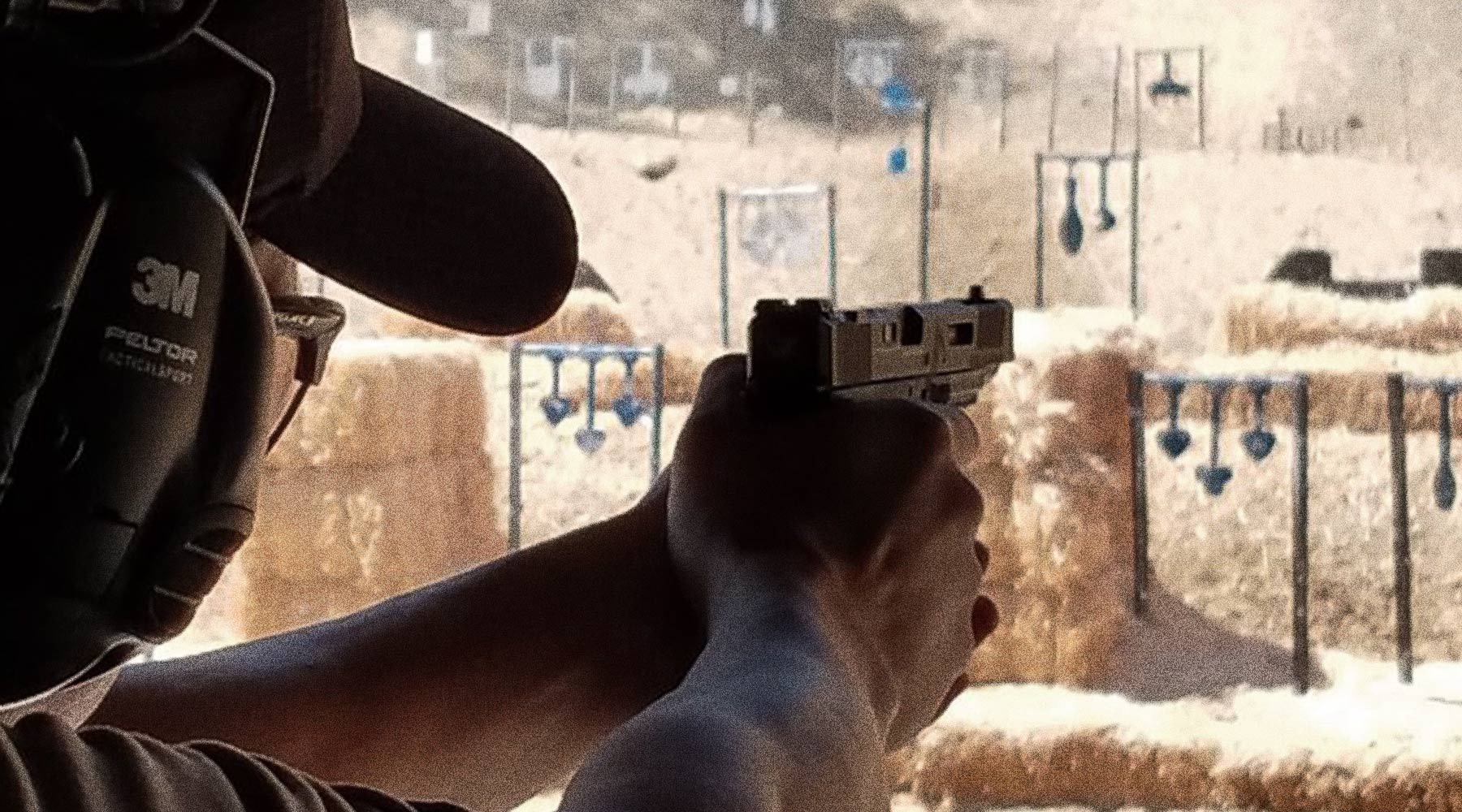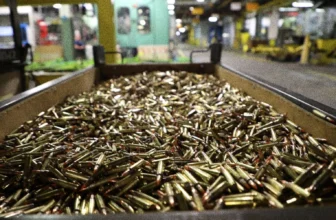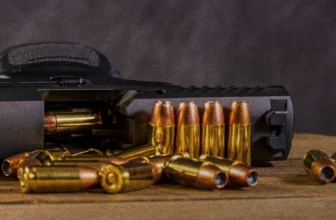Why We Wrote This Guide
With countless options on the market, first-time buyers and seasoned shooters alike can feel overwhelmed.
We want to help guide you to the right purchase so that if, God forbid, you ever needed it, you’ve got the right round chambered for any defensive scenario you might encounter.
This ultimate guide exists to cut through the noise and help you pick the ideal 9mm home defense ammo for your needs – whether it’s for home defense, everyday carry (CCW), or any situation where reliability and stopping power are paramount.
We’ll explain why 9mm is widely considered the best caliber for home defense, what characteristics make a self-defense bullet effective, and we’ll back it all up with hard data from trustworthy ballistic tests (FBI protocols, manufacturer tests, anecdotal experiences, and more).
By the end, you’ll know exactly what to look for, which specific loads are top performers, which 9mm ammo brands to avoid for self-defense, and how to tailor your ammo choice to your use case (home defense, short-barrel subcompact, recoil-sensitive shooters, and more).
A Few Reasons To Trust This Buyers Guide
At Target Sports USA, we’ve been in the ammunition business for over 15 years, supplying millions of rounds to law enforcement, military personnel, and civilian shooters across the country. We don’t just sell ammo — we live and breathe it. Our team has seen just about every brand and bullet type come through the industry. That means we know what works, what’s overhyped, and what to avoid — especially when it comes to something as serious as self-defense ammo.
When we set out to create this guide, we didn’t just toss out opinions or chase BS affiliate links.
Instead, we:
- Analyzed FBI ballistic gel testing data, prioritizing rounds that consistently penetrate 12–18 inches in 10% gel and expand reliably, even through heavy clothing and common barriers.
- Cross-referenced independent test results from various sources across different online and industry standard publications.
- Considered real-world law enforcement and civilian use cases, including what’s issued to major police departments, federal agencies, and what has proven effective in actual defensive shootings.
- Prioritized availability and consistency, focusing only on rounds that are currently in production and widely accessible to our customers.
- Dug into technical specs and construction — bonded vs. non-bonded bullets, nickel-plated vs. brass cases, +P vs. standard pressure, etc. — to help match the right ammo to your firearm and mission.
- Matched ammo to user needs: home defense, concealed carry, short barrels, ported guns, recoil sensitivity, and more.
We’ve been doing this a long time, and we’ve earned the trust of hundreds of thousands of customers by being straight shooters (pun intended).
This guide is the result of rigorous research, real-world insight, and firsthand experience. Whether you’re new to firearms or a seasoned CCW holder, we’re here to help you cut through the marketing gimmicks and make the right choice for you and your loved ones.
Let’s get into it.
Federal Law Enforcement 9mm Luger 147 Grain +P HST JHP – Box of 50 Target Sports USA Exclusive
Okay, So WHY IS 9mm a Top Choice for Self and Home Defense?
9mm Dominance and Effectiveness
The 9×19mm Parabellum, or “9mm Luger” (after “Georg Luger” who developed the round in 1905) is by far the most popular caliber for defensive handguns today – and for good reason.
Modern 9mm hollow-point ammunition has dramatically improved in performance, to the point that it can outperform larger calibers. In fact, an internal FBI report found that certain 9mm duty loads outperformed most .40 S&W and .45 ACP offerings in their testing.
Ballistically, there is “little to no noticeable difference in the wound tracks” between premium 9mm and .45 ACP defensive bullets. What this means is that with quality ammo, the 9mm can deliver terminal performance on par with bigger calibers without their downsides.
Advantages of 9mm (Capacity, Recoil, Cost)
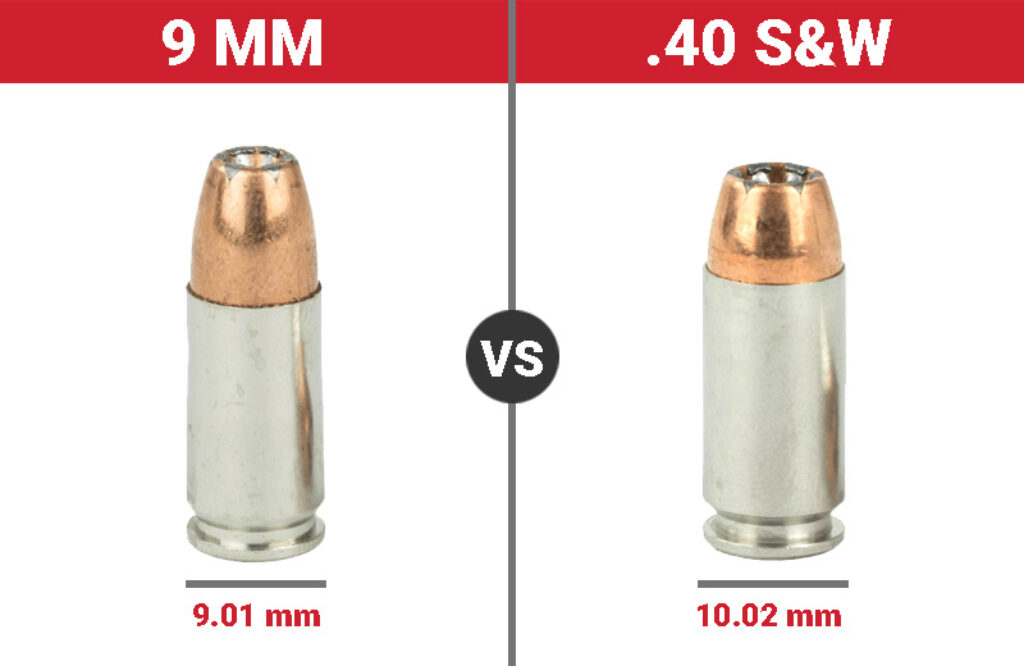
Beyond its proven effectiveness on target, 9mm offers practical advantages that make it ideal for home defense and concealed carry.
A 9mm pistol typically holds more rounds in the magazine than a larger caliber of the same size, giving you more chances to stop a threat. Recoil is significantly more manageable, meaning faster follow-up shots and better accuracy under stress.
The FBI’s own testing showed their agents could shoot faster and more accurately with 9mm than with .40 S&W in similar guns.
Lower recoil also makes 9mm a great choice for people of smaller stature or those new to defensive shooting. Additionally, 9mm ammo tends to be more affordable than larger calibers, so you can practice more for the same cost – a huge plus, since shot placement and practice are critical.
And unlike snappier rounds, 9mm puts less wear on your firearm, contributing to higher reliability rates in service pistols.
Law Enforcement Trusts 9mm

Perhaps the biggest endorsement of 9mm’s effectiveness is its adoption by police and federal agencies.
In the mid-2010s, the FBI famously transitioned back to 9mm as their primary caliber after years of using .40 S&W. Their conclusion: with advancements in bullet design, 9mm offers all the needed performance with fewer trade-offs.
Where the FBI goes, others follow – today the vast majority of U.S. law enforcement officers carry 9mm duty ammo. Elite military units and countless civilian experts also favor 9mm for defense.
This guide leverages the same data and testing standards (like the FBI Ballistic Test Protocol) that professionals use to evaluate what 9mm home defense ammo will perform when it counts.
What Makes a Good 9mm Self-Defense Round?
Despite fancy marketing tactics, not all ammo is created equal.
Plinking at the range with cheap 9mm FMJ is one thing; trusting your life to a round is another.
Here are the key performance factors that the best 9mm ammo for self-defense should achieve:
Sufficient Penetration
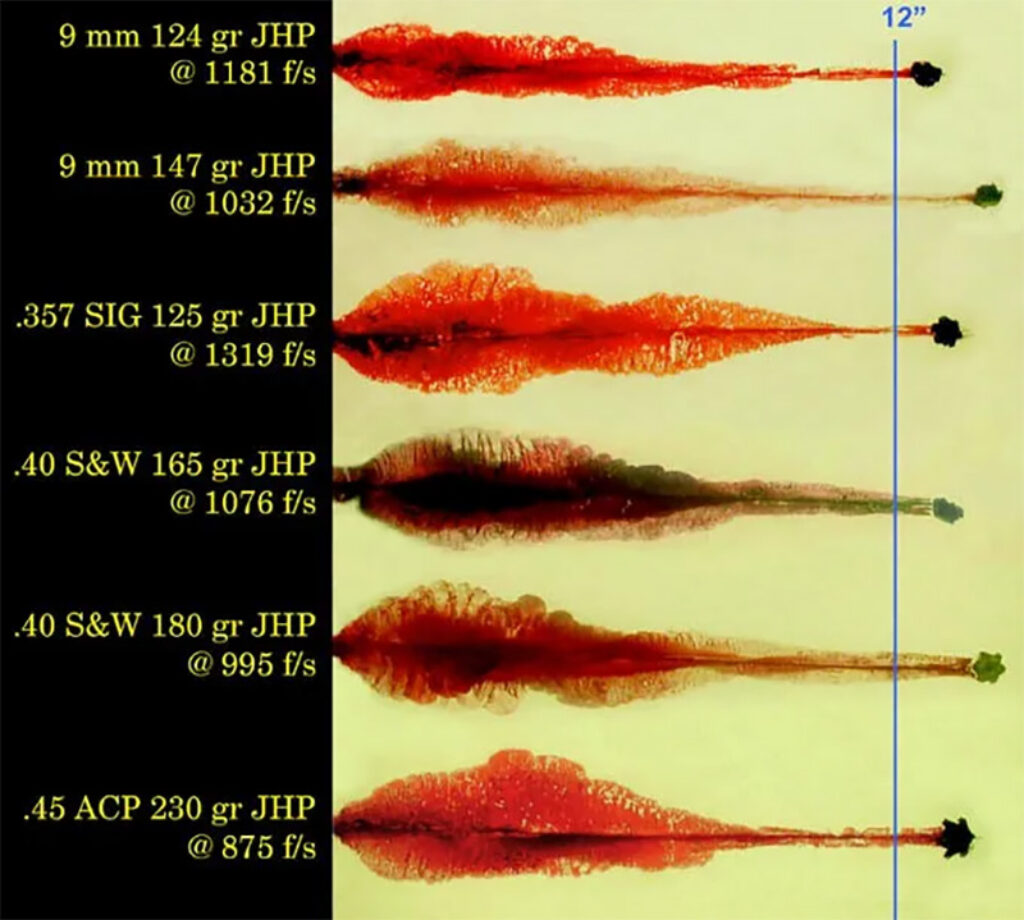
Terminal ballistics experts agree that a bullet must penetrate deep enough to reach vital organs and major blood vessels to reliably stop a threat. The FBI’s penetration standard is 12 to 18 inches in 10% ballistic gelatin, which approximates the depth needed to hit critical structures even through an arm or from odd angles.
Less than 12″ may not hit something important; more than 18″ risks over-penetration (the bullet exiting the bad guy and endangering bystanders).
All top defense loads are engineered to fall in this 12–18″ “golden zone” of penetration. For example, modern 147 grain 9mm hollow points typically penetrate ~14–16″ in gel, even after heavy clothing.
Reliable Expansion
Hollow point (JHP) bullets are designed to expand (mushroom outward) upon impact, which increases their diameter and creates a larger permanent wound channel while also slowing the bullet down.
This expansion is critical for quick incapacitation and for preventing over-penetration. A good self-defense round will consistently expand to roughly 1.5–2 times its original diameter.
In 9mm, that means expansion to about 0.50–0.70 inches, compared to the bullet’s original .355 inch diameter. The larger the expanded bullet, the more tissue it destroys (increasing “stopping power”) and the more it resists passing through the target.
Premium 9mm JHPs like Federal HST and Speer Gold Dot are known for massive expansion and high weight retention – in testing, a 147gr HST can expand to around .60–.65″, roughly doubling its size, while still penetrating ~16″.
By contrast, an non-expanding FMJ just punches a .355″ caliber hole straight through (like an ice pick), doing less damage and often exiting the target with energy to spare – a lose-lose scenario for defense.
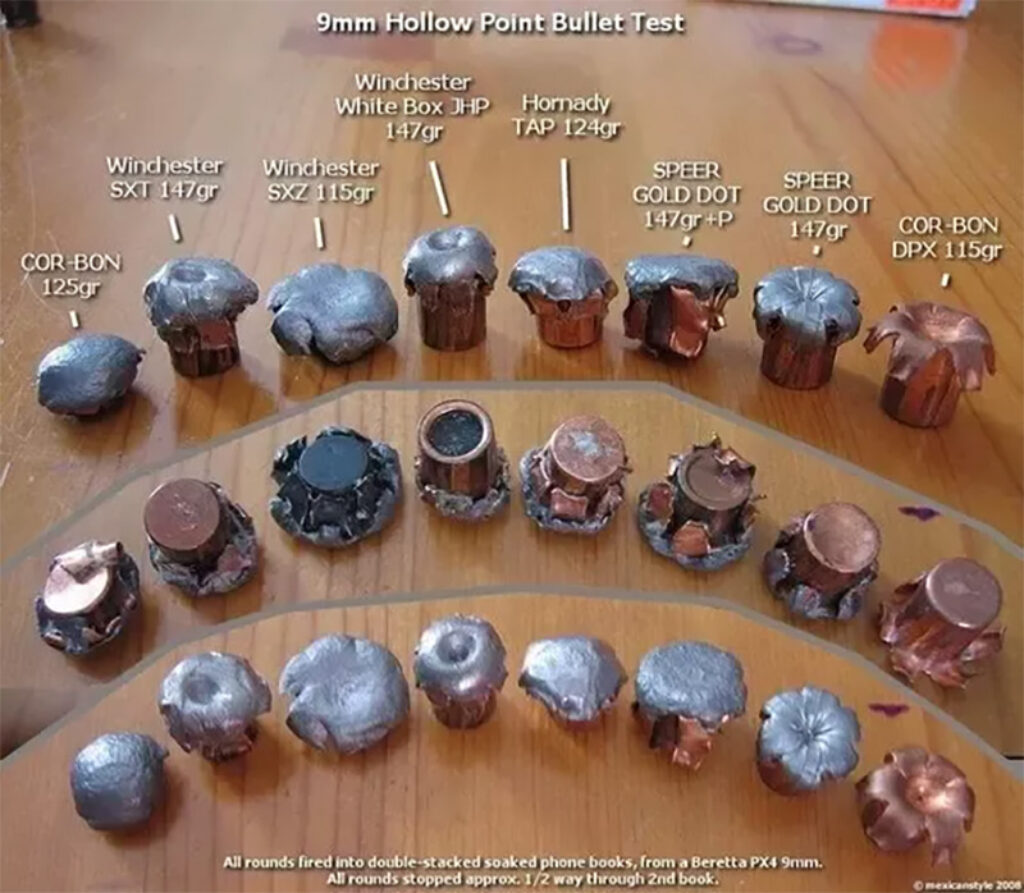
Weight Retention & Barrier Performance
The best 9mm defense ammo will hold itself together and keep penetrating even if it encounters intermediate barriers like clothing, drywall, or auto glass.
This is where bullet construction (the makeup of the actual projectile) matters.
Many top-tier jacketed hollow point (JHP) bullets are bonded, meaning the lead core and copper jacket are fused so the bullet doesn’t fragment or shed weight when passing through barriers. This helps them remain “barrier-blind” – they still expand and penetrate to the ideal depth after punching through heavy clothing, glass, or walls.
For example, Speer Gold Dot and Winchester Defender (PDX1) are bonded JHPs specifically engineered to pass the FBI’s tough barrier tests (including steel and windshield glass) and maintain near 100% of their weight targetsportsusa.com.
In short, a good self-defense 9mm will expand reliably without coming apart, ensuring it can plow at least a foot into an attacker under real-world conditions.
Accuracy and Reliability
The most lethal 9mm ammo is useless if it doesn’t feed, fire, and hit the target under stress.
Premium defense ammo is made to higher quality control standards – nickel-plated brass cases (for slick feeding and corrosion resistance), sealed primers, and consistent powder charges.
IMPORTANT NOTE: Always test fire a few magazines of your chosen carry ammo in your gun to verify it runs 100% reliably and hits point-of-aim.
Fortunately, most modern name-brand JHP ammo is extremely reliable in quality handguns. Any pick from our “best of” list should feed smoothly in standard 9mm pistols. Still, you want confidence that your specific pistol likes it.
(Note: I found that my Glock 43x did NOT like the Hornady FTX bullets (feeding issues), and I thought it was just everyone until I heard from others at the range that they weren’t having similar feeding issues in their 43x’s. MAKE SURE to test your chosen ammo in your firearm.)
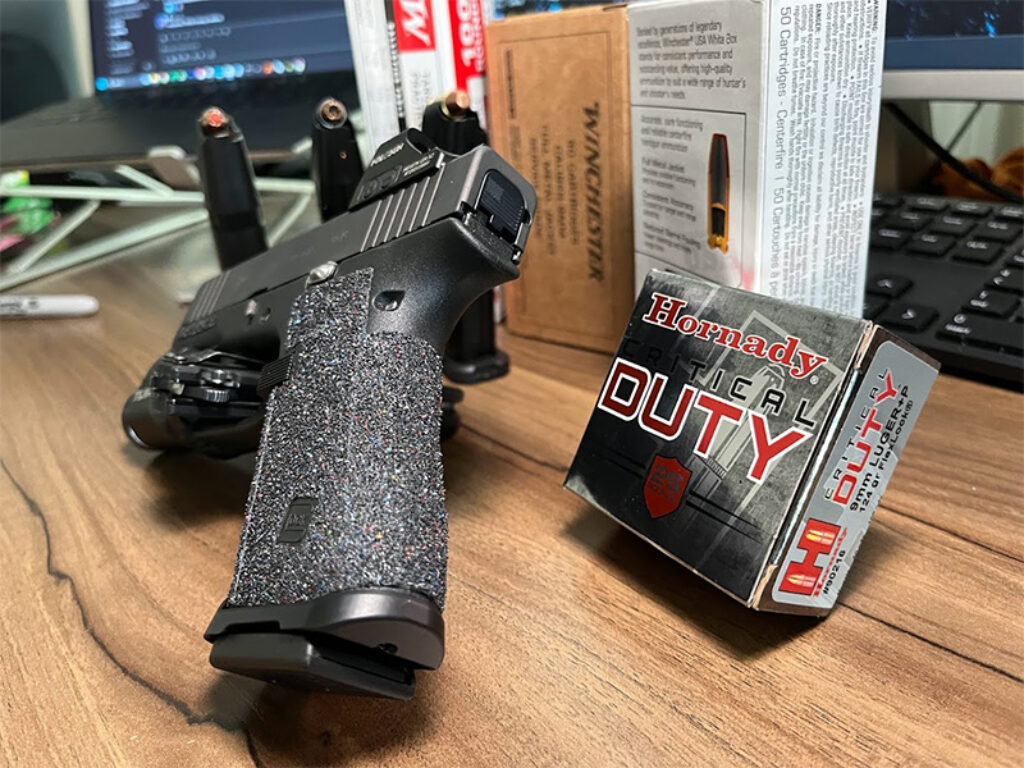
Also consider flash and bang: some loads use low-flash powders to preserve your night vision when firing in the dark (for example, Hornady’s Critical Duty line is formulated for low muzzle flash).
Reduced flash is a critical factor in a home-defense scenario at night.
Shootability
Finally (but equally important), the “best” 9mm ammo for you needs to be one you can shoot accurately and control.
A +P round that packs a bit more punch on paper isn’t truly better if its extra recoil causes you to miss. There’s a balance between ballistic performance and shooter comfort. Luckily, standard pressure 9mm loads can meet FBI penetration/expansion benchmarks just fine – so you don’t need +P unless you and your gun handle it well (we’ll discuss +P vs standard in detail later).
The bottom line on shootability: choose a round that hits the sweet spot of penetration, expansion, and controllability in your hands. (This guide will only get you so far, grab a few different rounds – links below – and hit the range)
Understanding Bullet Types (JHP vs FMJ, +P, and More)
Before we compare specific ammo choices, we need to clarify some of the bullet types and terms you’ll encounter:
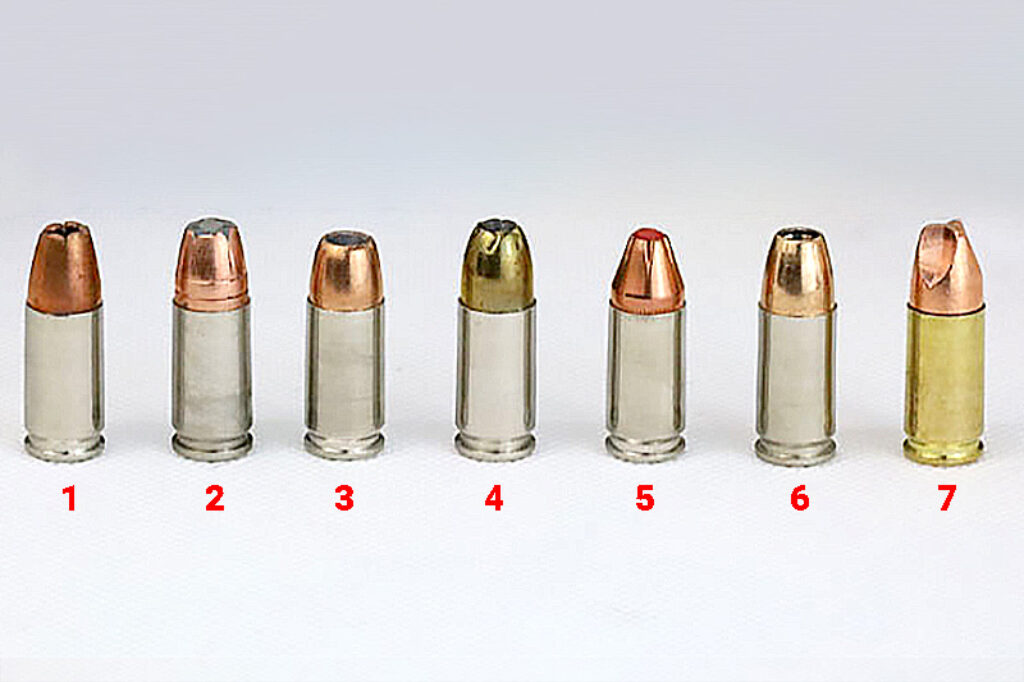
From left to right: (1) Winchester Defender 9mm 147 Gr +P Low Flash JHP, (2) Speer Gold Dot G2 Carry Gun 9mm 135 Gr JHP, (3) SIG Elite V-Crown 9mm 115 Gr JHP, (4) Remington 9mm Luger +P 9mm 124 Gr Golden Saber BJHP, (5) Hornady Critical Defense 9mm 115 Gr FTX, (6) Federal Punch 9mm 124 Grain 9mm JHP, (7) Black Hills HoneyBadger 9mm 125 Gr Subsonic Hydrostatic Solid Core
Jacketed Hollow Point (JHP)
This is the best 9mm ammo hollow point design for self-defense.
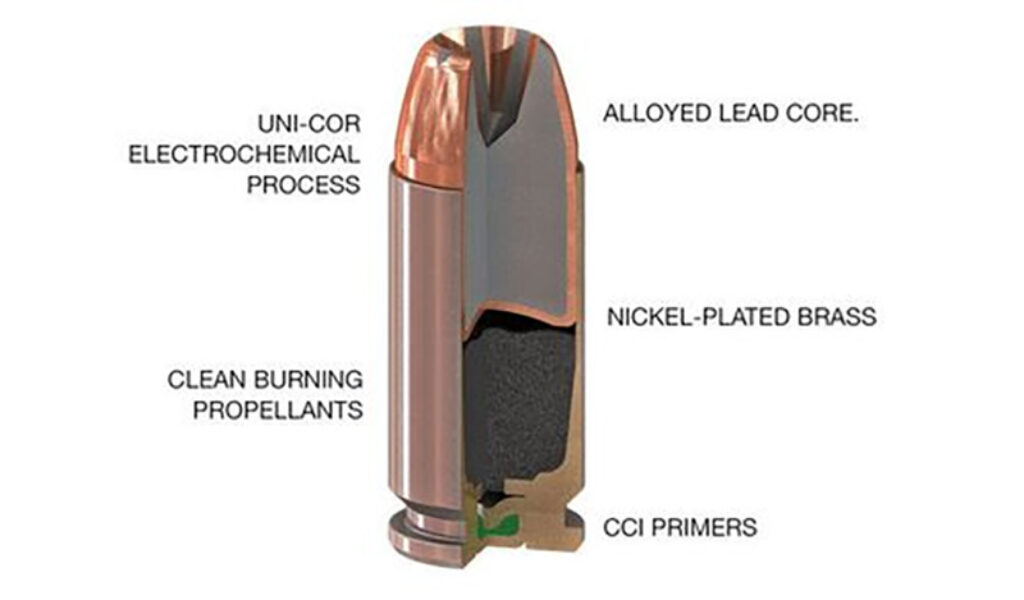
Image source: https://www.speer.com/performance/gold-dot-performance.html
A JHP has a hollow cavity in the nose that causes the bullet to expand upon impact. Modern JHPs are designed to rapidly expand in soft tissue while limiting penetration to the 12–18″ ideal zone. This results in a larger wound and less risk to bystanders (because the bullet usually stops in the bad guy).
Always choose JHP for defensive use. Practically every 9mm load considered “good” for defense will be a JHP or similar expanding design. Some famous examples include Federal HST, Speer Gold Dot, Hornady Critical Duty/Defense (FTX bullets), Winchester Ranger T-Series, and Remington Golden Saber. All of these have proven hollow-point designs that meet rigorous test standards.
(Note: There are a few non-hollow point expanding bullets like the Hornady Critical Defense FTX (with a polymer filled cavity) or all-copper Barnes TAC-XP which expands into sharp petals, and even the Black Hill s HoneyBadger with monolithic copper core that deals hydrostatic damage like a boat propeller in the water as it passes through soft tissue (see above). These function equivalently to JHP and are also excellent choices.)
Full Metal Jacket (FMJ)
FMJ rounds have no expansion mechanism – the bullet is typically a lead core fully encased in a copper jacket (with a round nose or flat tip).
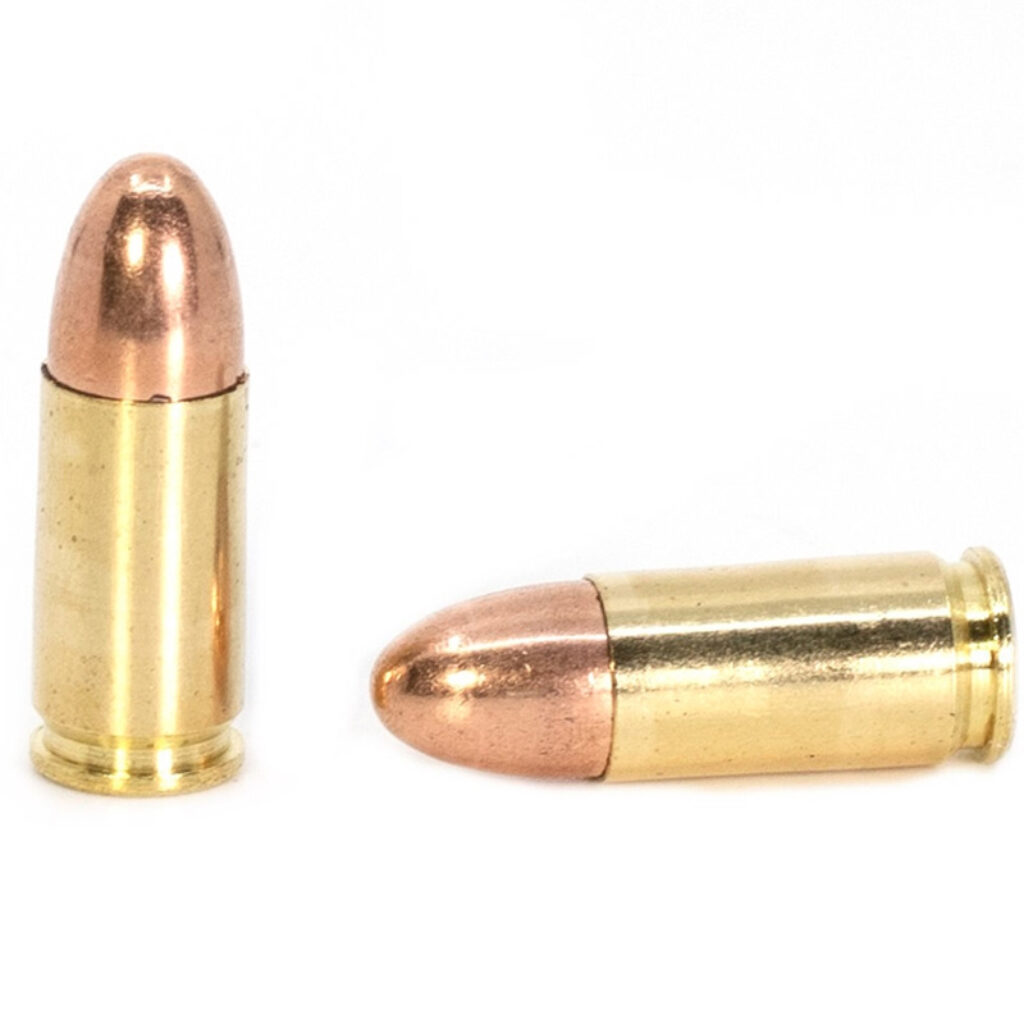
FMJ is great for training and target shooting, but not for self-defense. Why? As mentioned, FMJs will over-penetrate in most cases, often zipping through 2+ feet of gel or flesh. They cut a narrow wound channel and frequently exit the target with energy left, which is dangerous.
For example, a 115gr FMJ 9mm can penetrate well beyond 24″ of gelatin (far past FBI maximums) because it doesn’t expand to slow itself down. Using FMJ for defense also means you’re not making the most of the 9mm caliber – you’d be giving up the stopping power that modern JHPs afford.
Bottom line: reserve 9mm FMJ for the range; when it comes to a fight, load up with quality 9mm JHP rounds.
+P and +P+ Ammunition (“hot” loads)
Important note before we go any future: ALWAYS check your firearms manufacturer’s guide as to whether or not your firearm is rate for +P loads. (Generally speaking, Glock is rated for +P as long as it’s SAAMI conforming but not +P+).
You’ll notice some defensive ammo is labeled +P or even +P+.
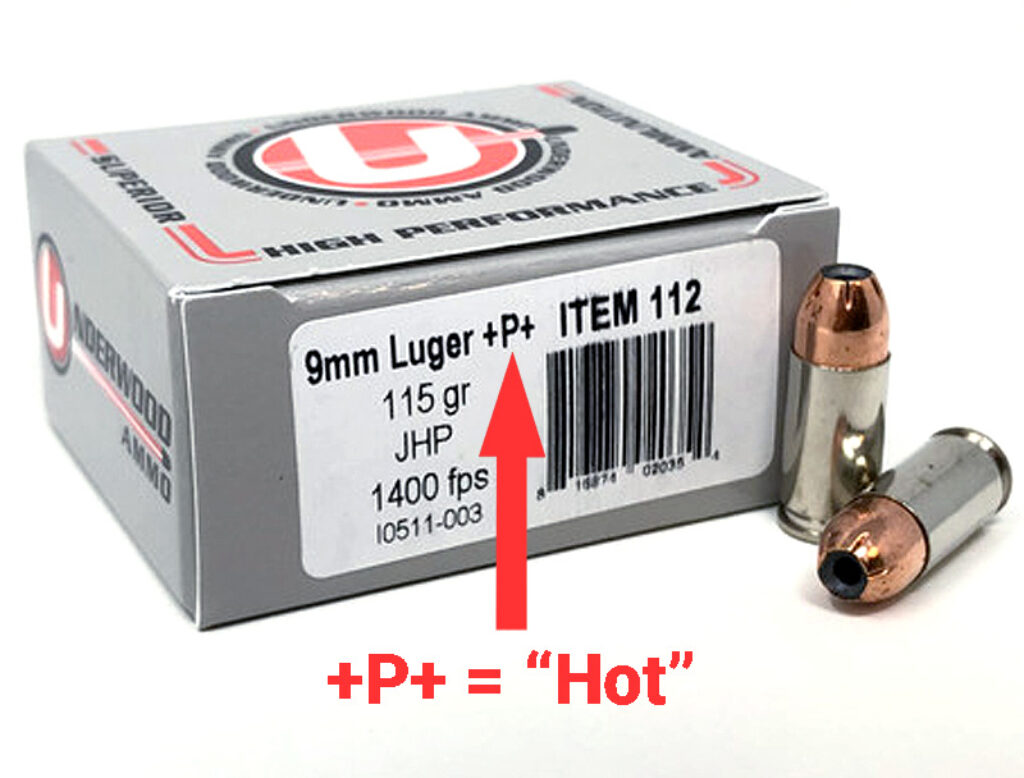
This indicates a higher internal pressure than standard 9mm. +P ammo is loaded slightly hotter (approximately 10% higher pressure than normal SAAMI specs), which typically yields higher muzzle velocity.
For example, a standard pressure 124gr might clock ~1,100 fps, whereas a 124gr +P could be ~1,200 fps targetsportsusa.com . This extra velocity tends to translate into a bit more expansion or penetration.
Many popular defensive loads are indeed +P (such as Speer Gold Dot 124 +P, Federal HST 124 +P, etc.) and they perform excellently.
+P+ is an unofficial designation for pressures even higher than +P (often only available in law enforcement product lines). An example is the Winchester Ranger 9mm 127gr +P+ T-Series, known as one of the most powerful 9mm ammo loads (~1,250 fps, ~450 ft-lbs energy).
However, more pressure = more recoil and muzzle blast, and potentially more wear on your firearm. Most quality 9mm pistols can handle occasional +P, but +P+ is not recommended in many guns (and using it may even void warranties). Always check that your firearm is rated for +P if you choose to use it regularly.
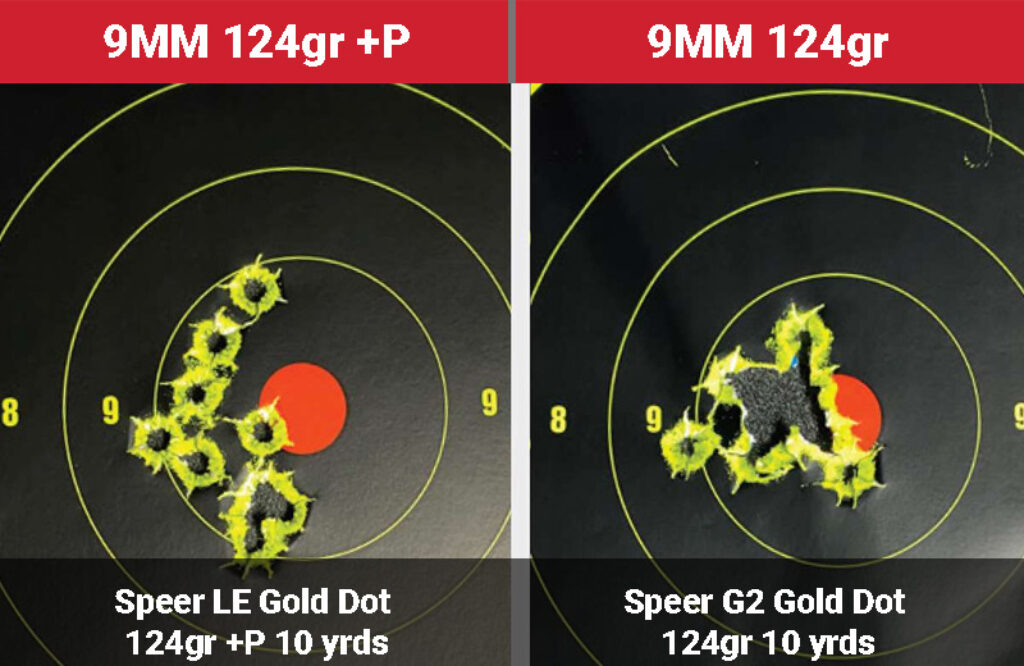
So is +P better for self-defense? It can be, if you can shoot it just as well. A hit with standard pressure is far more effective than a miss with +P.
The good news is many standard pressure JHPs are tuned to perform within the FBI criteria already. In fact, one test showed standard Federal HST 124gr expanded to .62″ but actually over-penetrated slightly (beyond 18″) – meaning standard load was plenty powerful. In short, +P is not required for effectiveness.
It’s an option to get a bit more velocity, especially useful in shorter barrels (since they start slower), but it’s not a magic wand. Choose +P if your particular gun and recoil control favor it; otherwise standard pressure will do the job. (We’ll elaborate with specific recommendations shortly.)
Bonded vs. Unbonded Bullets
As mentioned, “bonded” JHPs have the jacket and core chemically or mechanically bonded together.
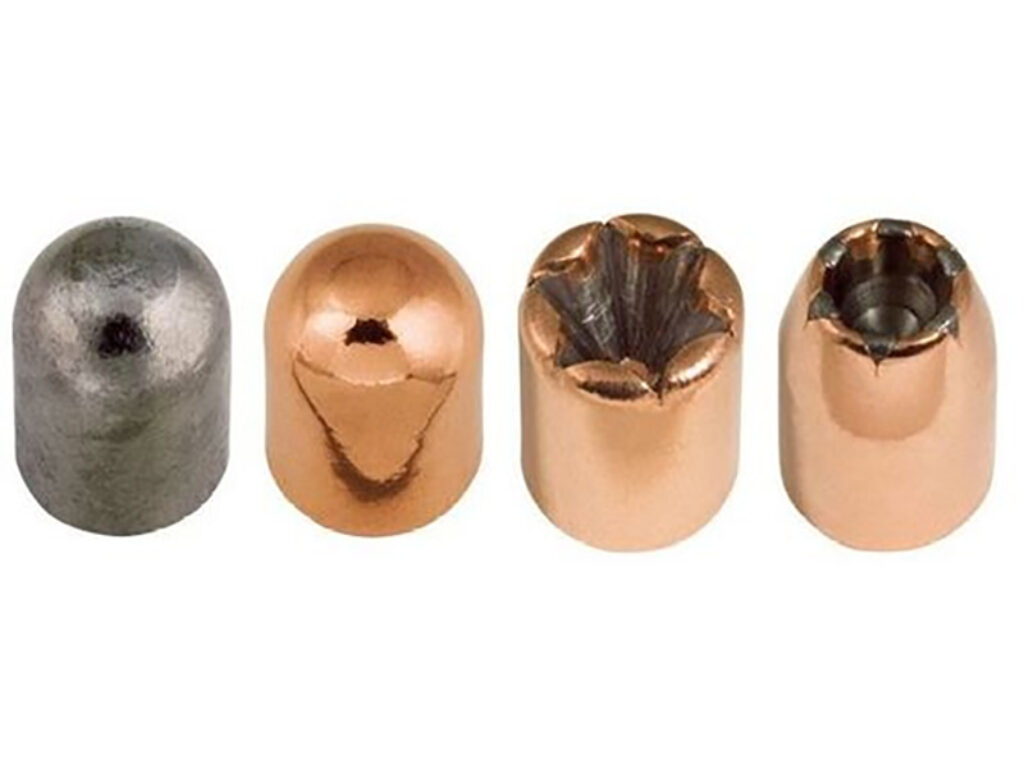
Image source: https://www.speer.com/performance/gold-dot-performance.html
The benefit is higher weight retention through barriers – the bullet is less likely to fragment or lose its jacket. This makes the bullet more robust when punching through things like glass or wood and still hitting the target.
Loads marketed as “Law Enforcement” often feature bonded bullets for this reason (Speer Gold Dot, Winchester Bonded PDX1, Remington Golden Saber Bonded are prime examples). Non-bonded bullets (like the Federal HST or Winchester Ranger T-Series) can still perform exceptionally well, but they use other engineering tricks to retain weight (for example, HST has a cannelure to lock the core and an open petal design that doesn’t shed mass).
Both bonded and non-bonded can be great – what matters is how they perform in tests.
Generally, if you anticipate needing to shoot through intermediate barriers (like car windshields), a bonded bullet is a safer bet for ensuring penetration. For civilian home defense, heavy clothing and maybe drywall are more likely barriers, which most quality JHPs today (bonded or not) can handle.
Bullet Weight (115gr vs 124gr vs 147gr)
This was something that tripped me up when I first started shooting. I’d randomly switch between 115gr (which everyone seemed to shoot) and 147gr not thinking about how it was affecting my training and shot placement.
9mm defensive ammo is typically offered in these three weight classes. Lighter bullets (115gr) go faster, heavier bullets (147gr) go slower. Many law enforcement agencies gravitate toward 124gr or 147gr bullets because they tend to penetrate a bit more reliably and handle barriers well.

Heavier bullets have more sectional density (helping penetration) and often expand a bit less explosively, which can also aid penetration.
Lighter 9mm bullets at high velocity can expand very aggressively – in some cases a bit too aggressively, limiting penetration. For instance, in one test a specialty 9mm 115gr +P bullet expanded to a whopping 0.70″ but failed to reach 12″ deep.
On the flip side, a 147gr bullet might only expand to ~0.50″, but go 16–18″ deep – a good trade-off. That said, a well-designed 115gr JHP can absolutely meet the FBI standards (many do). It’s also worth noting that 147gr rounds are subsonic (around 950–1000 fps) targetsportsusa.com, which makes them a bit quieter (especially if using a suppressor) and often gives a softer perceived recoil impulse (more of a push than the snap of a supersonic 115gr).
Here’s the deal regarding grain weights: All three weights will work, but 124gr and 147gr have become the most recommended for self defense. If you prefer 147 grain for its mild recoil and depth, go for it.
If your gun shoots 124gr the most accurately, that’s a great choice as well. And if you have a short barrel (3″ or less), a lighter +P load might help ensure it still expands – but there are also 147gr loads optimized for short barrels (we’ll cover that).
The key is that whatever the weight, make sure it’s a quality JHP.
Now that we’ve covered the basics, let’s look at the top-performing 9mm self-defense ammo options on the market today.
These rounds have proven themselves in FBI-type ballistic testing and on the street. We’ll also match certain rounds to specific uses (like best 9mm ammo for home defense vs. best 9mm defense ammo for a micro compact carry pistol). All of the ammo below is available from major manufacturers and has a solid track record. (You really can’t go wrong with any of these, but there are subtle differences worth considering.)
Top 9mm Defense Ammo Choices (Ballistics Comparison)
Before diving into individual picks, the table below provides a data-driven comparison of some of the best 9mm ammo for self-defense.
These figures are drawn from reliable, independent tests (using 10% ballistic gel and 4-layer heavy cloth per FBI protocol) and manufacturer specs.
This gives a sense of how each round balances velocity, penetration, and expansion. (Note: “Penetration” is the total distance the bullet traveled in gelatin, and “Expansion” is the final diameter of the mushroomed bullet. Barrel length for these tests was around 4 inches unless noted.)
| Ammo (Brand & Load) | Bullet | Velocity (fps) | Muzzle Energy (Ft. Lbs) | Penetration (inches) | Expansion (inches) |
|---|---|---|---|---|---|
| Federal HST 147 gr (LE Tactical HST) | JHP (Nickel-plated) | ~1000 fps | ~326 ft. lbs | 16.9″ average | 0.64″ average |
| Federal HST 124 gr +P (LE Tactical HST +P) | JHP (Nickel-plated) | ~1200 fps | ~396 ft. lbs | 16.9″ average | 0.62″ (typical) |
| Speer Gold Dot 147 gr (LE GD Duty) | Bonded JHP | ~950 fps | ~326 ft. lbs | 15.5″ average | ~0.50–0.55″ (typical) |
| Speer Gold Dot 124 gr +P (LE GD Duty) | Bonded JHP | ~1220 fps | ~410 ft. lbs | ~16.0″ (in heavy cloth gel) | ~0.52″ (typical) |
| Winchester Ranger T-Series 147 gr (RA9T “Black Talon”) | Bonded JHP | ~990 fps | ~320 ft. lbs | 15.9″ average | ~0.54″ (est.) |
| Remington Golden Saber Bonded 147 gr | Bonded JHP | ~990 fps | ~320 ft. lbs | ~14.0″ (est.) | 0.58″ average |
| Hornady Critical Duty 135 gr +P (FlexLock) | Bonded JHP + polymer tip | ~1110 fps | ~369 ft. lbs | ~15.5″ (FBI barrier avg) | ~0.45–0.50″ (avg) |
| Barnes TAC-XPD 115 gr +P (all-copper bullet) | Solid HP (Copper) | ~1100 fps | ~323 ft. lbs | 11–12″ (barely meets FBI min) | 0.70″ (extreme) |
Table Notes: All the above rounds are premium self-defense loads that were tested to perform well. We can see a trend: the 147gr JHPs penetrate in the mid teens (inches) and expand around .50–.65″. Lighter +P rounds like the Barnes 115gr can expand more dramatically (~.70″) but at the cost of shallower penetration (in fact, the TAC-XPD 115gr barely hit 12″, which is why some tests disqualified it).
The Federal HST and Speer Gold Dot stand out with a great balance: for instance, the 147gr HST penetrated ~17″ and expanded to .64″ in a lab test, while the 124gr HST +P likewise hit ~16–17″ with ~.62″ expansion.
Speer’s 147gr Gold Dot achieved about 15.5″ penetration with ~.53″ expansion, very close to the others. Hornady Critical Duty 135 +P (the FBI’s chosen load for a while) is engineered for tough barrier performance; it tends to penetrate 15″ even after auto-glass, but its expansion in bare gel is on the lower side (.45–.50″) – it “punches deep” reliably but doesn’t create as wide a wound as an HST.
The Winchester Ranger T-Series (heir to the famed Black Talon) and Remington Golden Saber are long-proven designs that also fall in that sweet spot of ~14–16″ pen and ~.5–.6″ expansion.
The big takeaway: all of these will do the job if placed on target. Differences in penetration within a couple inches or expansion within a few hundredths of an inch are less critical than reliability and shot placement.
Ballistic gelatin tests of premium 9mm JHPs demonstrate the ideal performance: deep penetration in the 12–18″ zone and robust expansion (often 0.5–0.7″). The Federal HST 124gr shown above expanded to around 0.62″ and penetrated ~17″ through heavy clothing. Such performance exemplifies why modern 9mm self-defense bullets are so effective.
Now, let’s break down some individual recommendations and use-cases, since “best” can depend on context.
Whether you need an ideal load for home defense in a full-size pistol, something optimized for a pocket-sized 9mm, or an option for a pistol-caliber carbine, we’ve got you covered.
Best 9mm Ammo for Home Defense
When defending your home, you’re likely using a mid-size or full-size handgun (barrel 4–5″) or even a 9mm carbine. You’re going to want ammunition that hits hard, stops an intruder quickly, and minimizes risk to loved ones in other rooms.
The following are top picks for 9mm home defense ammo:
Federal HST Law Enforcement 9mm Luger Ammo 147 Grain Jacketed Hollow Point – P9HST2
This round has become almost legendary among defense shooters. In FBI protocol tests, the 147gr HST consistently penetrates ~15″ and expands to ~0.60–0.65″. It’s a standard pressure load, so recoil is very manageable, and the heavy bullet tends to penetrate barriers (like drywall or glass) without breaking apart. The HST’s hollow point is designed to resist clogging and still expand after passing through clothing. Many law enforcement agencies issue the HST, and it’s a top choice for home defense because of its proven track record. If you have a full-size nightstand gun (Glock 17, M&P, Beretta, etc.), load it with HST 147gr with confidence. (Federal also makes a 150gr HST “Micro” specifically for short barrels, which we’ll discuss later – but the standard 147 works great in any barrel length around 4–5 inches.) You can find HST in 20-round boxes marketed to civilians, or the exact same ammo in 50-round law enforcement boxes – Federal HST 147gr JHP is the product to look for.
| Manufacturer | Federal 9mm Ammo |
| Caliber | 9MM Luger Ammo |
| Bullet Type | Jacketed Hollow Point |
| Muzzle Velocity | 1000 fps |
| Muzzle Energy | 326 ft. lbs |
| Primer | Boxer |
| Casing | Nickel Plated Brass Casing |
| Ammo Rating | Self Defense / Personal Protection |
| Grain | 147 |
Check Prices on TARGET SPORTS USA
Speer Gold Dot LE Duty 9mm Luger Ammunition 147 Grain Jacketed Hollow Point – 53619
Another heavyweight contender, the Gold Dot 147gr has been a duty load for countless police departments. In independent tests, it penetrated about 15–16″ and expanded around .53″ with perfect weight retention. The Gold Dot’s bonded core means it’s exceptionally “barrier-blind”, performing well even through auto glass. For home defense, that gives peace of mind that heavy clothing or intermediate objects won’t cause the bullet to fail. This is also a subsonic round with gentle recoil. It feeds very smoothly in most guns. Overall, the Speer Gold Dot 147 is a superb choice for indoor defense – it will get the job done if you do your part. Speer also offers it in 50-rd boxes; look for Speer Gold Dot 147gr LE Duty JHP.
| Manufacturer | Speer Ammo |
| Caliber | 9MM Luger Ammo |
| Bullet Type | Jacketed Soft Point |
| Muzzle Velocity | 950 fps |
| Muzzle Energy | 326 ft. lbs |
| Primer | Boxer |
| Casing | Nickel Plated Brass Casing |
| Ammo Rating | Self Defense / Personal Protection |
| Grain | 147 |
Check Prices on TARGET SPORTS USA
Winchester Ranger 9mm Luger Ammunition 147 Grain Jacketed Hollow Point – RA9T
Known originally as the Black Talon (in its 1990s iteration), the modern T-Series is a refined 147gr jacketed hollow point that creates devastating terminal performance. It typically penetrates ~14–15″ and has unique sharp petals upon expansion (earning it the “Talon” name). It’s not bonded, but it retains weight well and has stellar real-world results. Many state police agencies have used the Ranger T. For the armed citizen, it’s hard to find in retail 20-packs, but it’s available in 50-round Ranger law enforcement boxes as Winchester Ranger RA9T 147gr. If you come across it, it’s absolutely top-tier defensive ammo. (The civilian Winchester PDX1 Defender 147gr is a very similar bonded design derived from the FBI contract round, also a great home defense load.)
| Manufacturer | Winchester Ammo |
| Caliber | 9mm Ammo |
| Bullet Type | Jacketed Hollow oint |
| Muzzle Velocity | 990 fps |
| Muzzle Energy | 320 ft. lbs |
| Primer | Boxer |
| Casing | Nickel Plated Brass Casing |
| Ammo Rating | Self Defense / Personal Protection |
| Grain | 147 |
Check Prices on TARGET SPORTS USA
Hornady Critical Duty 9mm Luger Ammo +P 135 Grain FlexLock – 90226
Hornady’s Critical Duty line was actually built to meet the FBI protocol and even won an FBI contract for service ammo a few years back. The 135gr +P FlexLock bullet has a polymer-filled tip to prevent clogging (and to initiate expansion even through barriers). This round is designed to penetrate ~15″ after barriers like car doors or glass, so it is one of the more robust penetrators. In bare gel, it often goes towards the higher end of the FBI range (~16–18″) and expands to about .45–.50″. That expansion is a bit less than others because Hornady engineers it to not over-expand and slow down too much when intermediate barriers are involved. For civilian home defense, the Critical Duty is a great choice if you want a load that will perform no matter what it hits on the way. Some armed professionals prefer this for its consistency and barrier performance. One thing to note: Critical Duty is optimized for duty-size barrels and higher pressure; if you have a short 3″ barrel, the bullet may not expand as reliably (Hornady’s Critical Defense line might be better for compact guns). But in a home-defense scenario with a Glock 19 or full-size, Critical Duty 135 +P is excellent. It also uses low-flash powder, which is nice for dark environments. You can find it as Hornady Critical Duty 135gr +P.
| Manufacturer | Hornady Ammo |
| Caliber | 9 MM Luger Ammo |
| Bullet Type | FlexLock (non-bonded) |
| Muzzle Velocity | 1100 fps |
| Muzzle Energy | 369 ft. lbs |
| Primer | Boxer |
| Casing | Nickel Plated Brass |
| Ammo Rating | Self Defense / Personal Protection |
| Grain | 135 |
Check Prices on TARGET SPORTS USA
Federal Law Enforcement Tactical Bonded 9mm Luger Ammo 135 Grain +P Hollow Point – LE9T5
This is an honorable mention: a less common load that was made for certain government agencies, featuring a 135gr bonded bullet at +P velocity. It’s essentially designed to excel in FBI tests similar to Critical Duty. While not widely commercially available, some collectors or LE supply stores have it. If you happen to have some, know that it was built for barrier penetration and will certainly penetrate on the higher end (likely ~18″). It’s a specialized round but worth noting as part of the “heavy duty” home defense category.
| Manufacturer | Federal 9mm Ammo |
| Caliber | 9mm Luger Ammo |
| Bullet Type | Jacketed Soft Point |
| Muzzle Velocity | 1060 fps |
| Muzzle Energy | 335 ft. lbs |
| Primer | Boxer |
| Casing | Nickel Plated Brass Casing |
| Ammo Rating | Self Defense / Personal Protection |
| Grain | 135 |
Check Prices on TARGET SPORTS USA
In general, when using 9mm for home defense, go with heavy-for-caliber 9mm JHPs (124gr at minimum, 135gr+ or 147gr ideal) that are known performers. These tend to penetrate a bit more consistently, which is important since in a home scenario you may have to shoot from less-than-ideal angles or through obstacles.
Lighter 115gr +P JHPs can work too, but if over-penetration through walls is a concern, note that any 9mm JHP can penetrate multiple sheets of drywall.
The difference between 115gr and 147gr in drywall penetration isn’t huge – both will go through several walls. The best strategy to mitigate wall penetration is accuracy and knowing your angles, rather than picking an underpowered round.
You want the threat stopped as quickly as possible. So we recommend sticking with the proven law enforcement-type loads (like HST, Gold Dot, Ranger, Golden Saber, Critical Duty) for home defense.
They have the reliability, penetration, and expansion you need. And of course, ensure your chosen ammo feeds flawlessly in your home-defense firearm (run a box through to test). All of the suggestions above are brass-cased, nickel-plated in most cases, and built for supreme reliability in service weapons.
Best 9mm Ammo for Concealed Carry (CCW)
For concealed carry, the priorities sometimes shift slightly.
Most people carry a compact or subcompact 9mm handgun, which often means a shorter barrel (3 to 4 inches). Also, managing recoil in a small, lightweight (sometimes ultra-light weight polymer-frame) gun can be harder.
Therefore, the best 9mm carry ammo tends to be those that still perform well at somewhat lower velocity and don’t produce excessive recoil or muzzle flash.
Here’s our top 9mm picks for for CCW:
Speer Gold Dot LE Duty 9mm Luger Ammo 124 Grain +P Jacketed Hollow Point – 53618
This load has been a gold standard for law enforcement (NYCPD issues it) and is a great choice for carry. In a short barrel (~3.5″), it still achieves around 1,150 fps and reliably expands. Speer even makes a dedicated “Short Barrel” Gold Dot 124gr +P, which is optimized with slightly faster-burning powder to perform out of subcompact guns. In testing, Gold Dot 124 +P penetrates ~14–16″ and expands ~0.50″+ consistently. It has a snappy recoil but very manageable, and Gold Dots are known for feeding well in various pistols. If your carry gun is something like a Glock 19, Glock 26, SIG P365, S&W Shield, etc., you can’t go wrong with Gold Dot 124 +P. It offers a great balance of power and controllability in those platforms. Check out Speer Gold Dot 124gr +P JHP (usually available in 20rd or 50rd boxes).
| Manufacturer | Speer Ammo |
| Caliber | 9mm Ammo |
| Bullet Type | Jacketed Hollow Point |
| Muzzle Velocity | 1220 fps |
| Muzzle Energy | 410 ft. lbs |
| Primer | Boxer |
| Casing | Nickle Plated Brass Casing |
| Ammo Rating | Self Defense / Personal Protection |
| Grain | 124 |
Check Prices on TARGET SPORTS USA
Federal Law Enforcement 9mm Luger Ammunition 124 Grain +P HST Jacketed Hollow Point – P9HST3
While we highlighted the 147gr for home, the 124gr HST is extremely popular for carry. Some prefer the slightly flatter trajectory and higher velocity of the 124gr. As noted earlier, tests showed the 124gr HST can expand as big as 0.62″ and it typically penetrates ~14–15″. In rare cases it might expand so well that it borders on over-penetration (one test had an HST 124 go ~19″ in gel when it didn’t stop in 18) – but that’s still within reason. Most of the time it’s right in the sweet spot. The standard pressure 124gr has moderate recoil, making it great for compact guns. The +P version will add a bit of punch if you want it; both are excellent. Many concealed carriers load 124 HST in their 9mm for its track record in officer-involved shootings and gel tests. It tends to also be widely available. You can get it as Federal Personal Defense HST 124gr JHP (20rd boxes) or the identical LE HST P9HST1 in 50rd boxes for bulk savings. If your CCW is a micro like a SIG P365, Springfield Hellcat, or S&W Shield, the HST 124gr is a top contender to load up with.
| Manufacturer | Federal 9mm Ammo |
| Caliber | 9mm Ammo |
| Bullet Type | Jacketed Soft Point |
| Muzzle Velocity | 1200 fps |
| Muzzle Energy | 396 ft. lbs |
| Primer | Boxer |
| Casing | Nickel Plated Brass Casing |
| Ammo Rating | Self Defense / Personal Protection |
| Grain | 124 |
Check Prices on TARGET SPORTS USA
Sig Sauer Elite Performance V-Crown 9mm Luger Ammo 124 Grain Jacketed Hollow Point – E9MMA2-20
Sig Sauer in recent years introduced their own line of defensive ammo, and it’s proven to be quite good. The 124gr V-Crown often comes in 20rd boxes at reasonable prices. It’s tuned for standard pressure, so recoil is easy, and it expands to around 0.50–0.60″ while penetrating ~13–15″ in many tests. It may not have as long a track record as Gold Dot or HST, but it has received positive feedback from the online community and seems to be very consistent. If you practice with Sig’s cheaper FMJ and want to carry their JHP (which has similar recoil/POI), it’s a solid strategy. Essentially, Sig V-Crown is a defense load you don’t have to shy away from if you find a good deal on it. Still, if HST or Gold Dot are available, those have more empirical data behind them. But plenty of folks do stoke their P365 (fittingly) with Sig V-Crowns and feel well-protected.
| Manufacturer | Sig Sauer Ammo |
| Caliber | 9MM Luger Ammo |
| Bullet Type | V-Crown Jacketed Hollow Point |
| Muzzle Velocity | 1165 fps |
| Muzzle Energy | 374 ft. lbs |
| Primer | Boxer |
| Casing | Nickel Plated Brass Casing |
| Ammo Rating | Self Defense / Personal Protection |
| Grain | 124 |
Check Prices on TARGET SPORTS USA
Hornady Critical Defense 9mm Luger Ammunition 115 Grain Flex Tip Expanding – 90250
This is Hornady’s offering tailored for short-barrel concealed carry pistols. Critical Defense is different from Critical Duty: it uses a lighter 115gr bullet with a polymer flex tip, designed to ensure expansion even at lower velocities (like snub-nosed barrels produce) and through light barriers. It is not +P (though they offer a lighter Critical Defense Lite 100gr). The standard Critical Defense 115gr will leave a short barrel around ~1050–1100 fps and expand reliably around .50″, penetrating ~12–14″. While it doesn’t have the deepest penetration of our list, it is engineered to avoid clogging with its tip and to dump energy quickly – Hornady’s philosophy for civilian defense being that over-penetration is a bigger concern than barriers. For pocket-sized guns (3″ barrels), this round is a great choice because it will expand even at those lower velocities, where some heavier bullets might not. Also, Hornady uses low-flash powders in Critical Defense. If you carry, say, a Ruger LC9s or a small single-stack 9mm, Critical Defense gives very consistent performance. Just remember it’s designed for scenarios like a thinly clothed attacker; it’s not meant to shoot through car windshields or such. You can find it as Hornady Critical Defense 115gr FTX easily.
| Manufacturer | Hornady Ammo |
| Caliber | 9MM Ammo |
| Bullet Type | Flex Tip Expanding (Non-Bonded) |
| Muzzle Velocity | 1140 fps |
| Muzzle Energy | 332 ft. lbs |
| Primer | Boxer |
| Casing | Nickle Plated Brass Casing |
| Ammo Rating | Self Defense / Personal Protection |
| Grain | 115 |
Check Prices on TARGET SPORTS USA
Federal Personal Defense 9mm Luger Ammo 150 Grain HST Jacketed Hollow Point – P9HST5S
Federal developed a specific subsonic 150 grain HST marketed for “Micro” pistols. It’s standard pressure and optimized to expand at the lower velocities from short barrels (e.g., 3″). This is somewhat the opposite approach of Hornady – Federal went heavier and slower, but with a very soft bullet that expands easily. Tests of the 150gr HST Micro showed ~13–14″ penetration and around 0.59″ expansion from short barrels. Essentially, it brings full-size performance to the little guns. Recoil is a soft push. If you carry an ultracompact 9mm and can find the 150gr HST Micro, it’s definitely worth considering. It feeds well (nickel-plated case, like other HSTs) and has that superb HST expansion design. Keep in mind, because it’s a heavier bullet, the point of impact might be slightly higher at certain distances compared to 115gr practice ammo – always verify your POI/POA. This round is a bit less common to find; standard HST 147 might be easier to get and performs similarly. But the HST Micro 150 was basically made to ensure even a 2.5-3″ barrel could still get >12″ penetration consistently.
| Manufacturer | Federal 9mm Ammo |
| Caliber | 9MM Ammo |
| Bullet Type | Jacketed Hollow Point |
| Muzzle Velocity | 900 fps |
| Muzzle Energy | 270 ft. lbs |
| Primer | Boxer |
| Casing | Nickel Plated Brass |
| Ammo Rating | Self Defense / Personal Protection |
| Grain | 150 |
Check Prices on TARGET SPORTS USA
Remington Golden Saber Bonded 9mm Luger Ammo 124 Grain +P Bonded Jacketed Hollow Point – GSB9MMDB
Though an older design, Remington’s Golden Saber (especially the bonded version) remains a viable CCW load. The 124 +P has a good mix of velocity and expansion, while the 147 standard pressure penetrates a bit more. Golden Sabers have a brass jacket that expands into large petals. One unique variant is the Golden Saber Black Belt line, which is an upgraded design with a mechanical lock (the “black belt”) to keep the core/jacket together. Black Belt 9mm 124gr +P is an excellent performer by all accounts, matching modern standards. If you happen to have Golden Sabers from “bulk pack” deals, know that while they may not quite reach HST level performance, they were considered top-tier in the early 2000s and still hold their own. For example, a 124gr +P Golden Saber might penetrate ~13″, expand ~0.52″. Remington’s newer offerings (like the Ultimate Defense line) are basically Golden Sabers in different packaging. So, these can certainly be used for carry, though our preference leans toward the aforementioned newer designs first.
| Manufacturer | Remington Ammo |
| Caliber | 9mm Ammo |
| Bullet Type | Bonded Jacketed Hollow Point |
| Muzzle Velocity | 1125 fps |
| Muzzle Energy | 348 ft. lbs. |
| Primer | Boxer |
| Casing | Nickle Plated Brass Casing |
| Ammo Rating | Self Defense / Personal Protection |
| Grain | 124 |
Check Prices on TARGET SPORTS USA
Special note on +P in compacts: If you’re particularly recoil-sensitive or have an ultra-light polymer gun, you may want to stick to standard pressure loads for carry (like 147gr standard, or 124gr standard) instead of +P. The difference in recoil can affect your shooting, and as we’ve stressed, standard loads will still do the job.
However, many compact 9mm (Glock 19, Sig P365, etc.) are perfectly controllable with +P for most experienced shooters. (Make sure to check your manufacturer guides on +P ammo).
It’s a personal call. There’s also the consideration of muzzle blast – short barrels with +P can produce quite a bit of flash/bang (which could be detrimental at night when most defensive scenarios unfortunately play out).
Some loads mitigate this (low flash powders), others can be fireball factories. Testing a few at the range (including in low light if possible) can inform your choice.
For CCW we recommend 124gr class JHPs (standard or +P) that are known to expand reliably from shorter barrels.
The Gold Dot 124 +P and HST 124 are hard to beat as all-around performers that many concealed carriers trust. If your firearm is very short or you prefer less recoil, the heavier subsonics (HST 147, 150 Micro) or tailored loads like Critical Defense are excellent alternatives.
Just be sure to avoid anything that sacrifices too much penetration for flashiness (more on that in the “avoid” section).
Carry ammo needs to work from a 3″ barrel and through heavy clothing, etc. – all the recommendations above have been vetted in those conditions by reputable tests.
Low-Recoil Option
If you are particularly sensitive to recoil or you’re equipping a shooter who is, here is a noteworthy option:
Hornady Critical Defense Lite 9mm Luger Ammunition 100 Grain Flex Tip Expanding – 90240
This load is literally marketed for low recoil. It fires a 100 grain FTX bullet (pink tip) at a slightly reduced velocity (~1,000 fps) and thus has less kick. It still expands (since the FTX is designed to even at low impact speeds), but penetration is on the shallow side (~10–12″). Because it doesn’t quite hit the FBI 12″ consistently in heavy cloth tests, we generally suggest it only if standard loads are unmanageable for the shooter. If an elderly or recoil-shy shooter can only handle this round, it’s certainly better than not hitting the target with a stouter round. Just be aware of its limitations. It’s a decent choice for a very recoil-averse individual’s home-defense nightstand gun, for instance.
| Manufacturer | Hornady Ammo |
| Caliber | 9mm Ammo |
| Bullet Type | Flex Tip Expanding (Non-bonded) |
| Muzzle Velocity | 1125 fps |
| Muzzle Energy | 281 ft. lbs |
| Primer | Boxer |
| Casing | Nickle Plated Brass Casing |
| Ammo Rating | Self Defense / Personal Protection |
| Grain | 100 |
Check Prices on TARGET SPORTS USA
Short 9mm Barrel Considerations for Self Defense Scenarios
Short Barrels (<3.5″): We touched on some of this, but to reiterate: If you carry or use a very short barrel 9mm (like the SIG P365 3.1″, Glock 43 3.4″, or ultra-small guns around 3″), you’ll want to choose ammo known to perform at lower velocity.
The Speer Gold Dot 124gr +P Short Barrel version, Federal HST Micro 150gr, and Hornady Critical Defense are prime candidates. Standard Gold Dot, HST, etc., were all tested out of service pistols (4″ barrels) but generally do quite well down to ~3″.
Below 3″, you start to risk some JHPs not opening up fully.
If you have something like the 3.1″ Sig P365, it’s right on the edge but most premium ammo will still expand – you might lose say 50-100 fps of velocity compared to published specs, which could reduce expansion a hair. That’s why a Short Barrel specific load can be a nice insurance policy.
One interesting short-barrel note: Speer recently released a Gold Dot Carry Gun 135gr load, which they claim is tuned for compact pistols (somewhere between their regular and the old G2 design). It’s new, so not a lot of data yet, but Speer says it meets FBI tests from shorter barrels. It could be worth keeping an eye on if you like Speer products.
What 9mm Ammo to Avoid for Self-Defense
Just as important as knowing the good stuff is knowing what 9mm ammo not to use for defense. The goal is to save you from false confidence in a poor performer or a gimmick. Here are types/brands to be wary of:
FMJ (Full Metal Jacket)
We’ve said it before, but it bears repeating – do not load your defensive firearm with FMJ rounds. This includes the common 115gr or 124gr “ball” ammo from brands like Blazer Brass, Winchester White Box, PMC Bronze, etc. Those are for practice only. They will over-penetrate in a human target, potentially endangering others, and they create smaller wound channels (less stopping effect). The only conceivable exception is if it’s absolutely all you have in a life-or-death emergency. But if you’re reading this guide, you probably have the means to get proper JHP. So there’s really no excuse to use FMJ for carry or home defense. Even the cheapest JHP is preferable to any FMJ in terms of terminal effect.
Exotic “Gimmick” Rounds
The market has seen a lot of flashy ammo claiming to be the “deadliest 9mm ammo” ever, usually without backing it up in standardized tests. Be skeptical of extreme marketing. For example:
- The G2 Research R.I.P. ammo gained notoriety for its spiked appearance and tagline of creating “9 separate wound channels.” In reality, in ballistic gel it tends to fragment into tiny pieces that penetrate far too shallow (often only 6–7″) and lack the ability to hit vitals. Essentially, it makes a nasty shallow surface wound but doesn’t reliably stop a determined attacker youtube.com. This round is almost universally panned by serious experts despite its marketing hype.
- Ultra-light, high-velocity frangible rounds like Liberty Civil Defense (50gr at 2000 fps) or MagSafe or Glaser Safety Slug have a similar problem: they fragment or deform so rapidly that they often fail to reach critical organs. A round that stops at 8 or 10″ in gel might cause a lot of pain, but it might not hit anything that immediately incapacitates an attacker, who could keep fighting. The Liberty Civil Defense, for instance, tends to break apart – it might create a large temporary cavity, but the base that continues forward is very light and may not meet the 12″ standard. For that reason, these ultra-light “energy dump” rounds are generally not recommended by experts for primary defense ammo. They could have a niche use in extremely over-penetration-sensitive environments (like on an aircraft, which is what Glaser Safety Slugs were originally for), but for civilian defense against a violent attacker, you want penetration and consistent performance.
- Novelty projectiles like the old Extreme Shock, Fang Face, or other fragmenting things (often pitched to cause massive trauma or shock) have repeatedly failed to outperform good JHPs in FBI-style tests. They often either under-penetrate or behave erratically. Stick to what’s proven by science, not marketing.
Unproven Import or Reloaded JHPs
There are some very inexpensive JHP rounds out there from lesser-known brands or imports. While some of these might function adequately, the concern is consistency and quality control. For example, steel-cased Russian-made 9mm JHP or surplus military JHP might not have reliable expansion (some older military JHP designs were practically FMJ in behavior). Likewise, reloads or remanufactured ammo (unless from a very trusted source) should be avoided for defense due to potential inconsistencies or higher chance of a dud. It’s worth the slight extra cost to buy factory-new, premium ammo for the rounds you’re staking your life on.
Older 9mm JHP Designs in very lightweight bullets
A specific caution on rounds like 90gr or 65gr 9mm JHPs (there have been some exotic ones). Most of these will have the same issue as above – lots of speed, big expansion, inadequate penetration. Unless you find reputable test data showing a lightweight bullet meeting 12″ penetration, treat with caution.
++P++ or Home-brew 9mm Hot Loads
Pushing 9mm beyond +P into the +P+ realm is something only established manufacturers should even attempt (and even then, use +P+ sparingly). Using ammunition that is beyond industry pressure guidelines can not only damage your gun over time but also risk reliability (in extreme pressure, primers can blow, etc.). Some boutique companies like Underwood do sell +P+ ammo (for instance, a 9mm +P+ with a bonded bullet). While Underwood uses quality bullets (they often load Gold Dots or Lehigh solids), you should only consider +P+ if your firearm is known to handle it and you have a specific need. The performance gain is usually a few inches of penetration or an extra 50 fps – not earth-shattering. And remember, shot placement and sufficient penetration trump raw energy. A lighter, faster +P+ bullet that might give you 50 more ft-lbs but then over-penetrates or under-expands isn’t an improvement. So generally, we advise sticking to standard or +P from the major makers rather than +P+ from boutique loaders for personal defense.
9mm Ammo Brands to Avoid?
People often ask if there are specific 9mm ammo brands to avoid. The truth is, virtually all the major ammo manufacturers produce at least one good JHP line. Federal, Speer, Winchester, Remington, Hornady, CCI, Sig Sauer, PMC, Sellier & Bellot, Fiocchi, and others all have viable defensive offerings. So it’s less about brand and more about the product line.
For instance, Winchester makes the excellent Ranger T-Series, but they also sell generic “USA White Box JHP” which uses an outdated bullet that doesn’t expand well (and is not recommended for defense). Remington’s cheap 115gr JHP (the green-box UMC JHP) is an old design that might not consistently expand, whereas their high-end Golden Saber is great.
So avoid using the bargain-basement JHP loads from any brand as your defense ammo.
They might be tempting due to price, but they often use decades-old technology. Spend a few extra dollars for the premium line from that brand. Your life is worth it.
Examples of economy JHP lines that are not as optimal but will still “do the job”:
- Winchester USA JHP
- Remington UMC JHP
- Federal “Hi-Shok” (not HST, but the old Hi-Shok)
Remember, these aren’t terrible – they will expand sometimes – but their performance is inferior and less consistent compared to the premium lines like HST, Gold Dot, Ranger, etc.
- Stick with known JHP designs that have been tested according to FBI protocols or similar.
- Avoid anything that hasn’t been put through those paces or that clearly fails to meet the 12″-18″ penetration requirement.
- Don’t be lured by fancy marketing that doesn’t provide real data.
The rounds we recommend in this guide have that data backing them. If you’re ever unsure, look up ballistic gel test results for the specific ammo before you trust it for carry. And as a rule of thumb, if it’s sold as a gimmick or sounds too good to be true (“works like a buzz-saw!”, “feeds like FMJ, wounds like a grenade!” etc.), it’s probably not a wise choice to bet your life on.
Real-World Performance: Barrels, Carbines, and Other Factors
So far we’ve discussed ammunition performance mostly in controlled testing scenarios. It’s worth touching on how things play out in the real world and special circumstances:
Short Barrel vs. Long Barrel
As noted, short barrels reduce bullet velocity.
A load that leaves a 4″ barrel at 1150 fps might only be going 1050 fps out of a 3″ barrel. This can affect expansion. The best defense ammo will still expand at lower velocities, but some might show slightly reduced expansion or increased penetration from short barrels. Manufacturers like Speer, Federal, and Hornady have recognized this, hence their “short barrel” offerings.
On the flip side, if you fire the same ammo from a longer barrel (say a 16″ 9mm carbine), velocity can increase significantly. For example, a +P 124gr that is 1200 fps from a pistol could be 1350+ fps from a carbine.
This could cause the bullet to expand more rapidly or even fragment in gel, potentially reducing penetration a bit. Generally, though, firing pistol ammo from a carbine tends to enhance its wounding effect – either it expands larger or creates more temporary cavitation.
Most JHPs will still stay within decent penetration range even at higher velocity (some might penetrate a little less because they expanded more). If you use a 9mm carbine for home defense, any of the top-tier JHPs will likely work very well.
Just be aware that the added velocity could make a marginal bullet over-expand. But stick to the good ones and it’s all positive. (One plus: 9mm from a carbine is much louder but has virtually no recoil, and you get a velocity boost. Many folks consider a 9mm carbine with 30-round mags and JHP ammo to be an excellent home defense weapon.)
Ported Barrels and Compensators
If your handgun has a ported barrel or a compensator (cuts or holes that vent gas upward to reduce recoil), ammo selection can be a bit more nuanced.
Porting can reduce velocity slightly (as gas is bled off) and can dramatically increase the visible muzzle flash (since burning powder may exit through the ports). One quirky phenomenon: using certain plated ammo (like budget target ammo CCI Blazer Brass, which has a copper-plated lead bullet instead of a traditional jacket) in ported barrels has been known to shower the shooter with particles or unburnt powder.
Essentially, the hot gases and bits of copper/lead can spray upward through the ports – some shooters of ported guns report more pronounced “blast” with certain ammo.
This isn’t usually a problem with carry JHP ammo (they almost all have true jackets, not just plating), but it’s something to note if you practice with cheaper ammo in your ported carry gun. In short, a ported barrel can cause extra flash and blast.
To mitigate this for defense, choose low-flash defensive ammo if possible (for example, Speer Gold Dot and Hornady Critical Duty tend to be formulated for lower flash). And definitely test your chosen ammo through the ported gun to see if the cycling and any blast effects are acceptable.
A known instance was with some ported Glock pistols, where Blazer Brass range ammo would vent quite noticeably upward – switching to a different ammo reduced that. With quality JHPs, you likely won’t have excessive debris, but you may still get a visible flash out of the ports in low light. Just something to train for if you use a ported pistol.
Gas-Operated Pistols / PCC Gas blowback
Some unconventional 9mm platforms (like certain AR-style pistols or carbines) might be gassier with hot ammo. Firing +P ammo in a blowback 9mm carbine could result in more gas or residue coming back at you.
Generally it’s not a huge issue; wear eye protection and you’re fine. But you might find that one ammo runs “dirtier” or makes more smoke – that could be a factor if you ever had to shoot indoors. For instance, some powders in cheaper ammo create a smoky cloud, whereas the powders in something like Federal HST are usually cleaner burning.
Again, one more reason to stick to quality ammo for actual defense use – it’s often cleaner and less prone to excessive smoke or flash.
Temperature and Environment
Extreme cold or heat can very slightly affect ammo performance. But modern ammo is built to work from Arctic cold to desert heat. Unless you’re storing your gun in sub-zero temperatures, you probably won’t notice a difference.
One tip: if you keep a pistol in a hot car for months with the same ammo in the chamber, consider rotating that ammo out periodically. Heat can, over long periods, degrade powder or primers. It’s rare, but fresh ammo is cheap insurance. Also, oil and solvents can penetrate primers – so keep your carry ammo dry and clean; wipe off excess gun oil from your loaded magazine.
A squib or dud in a gunfight is the last thing you want, so store and handle your defensive ammo accordingly (cool, dry, and untouched by chemicals).
Real World Feedback
It’s useful to know that the rounds we recommend aren’t just good in the lab – they’ve been used successfully in defensive shootings by law enforcement and civilians.
For example, Federal HST and Speer Gold Dot have hundreds of officer-involved shootings as evidence of their effectiveness. Online communities (forums like AR15.com, Reddit r/CCW, etc.) often have discussions where people overwhelmingly choose HST, Gold Dot, Ranger-T, or similar. There’s a reason the same few loads keep coming up: they have a real-world track record on the street. In police shootings, rounds like Gold Dot and HST have shown high success in stopping attackers (when placed correctly).
The FBI’s own justification for 9mm noted that shot placement and adequate penetration are key, and that modern 9mm “now make 9mm Luger service ammunition with outstanding…projectiles”, giving officers the best chance of success.
Many concealed carriers will mirror that sentiment – load your gun with one of these outstanding projectiles and focus on your training.
And for just about everything else we may have missed, let’s dive into some FAQs around the best 9mm defense ammo…
9mm Self-Defense Ammo FAQs
It’s natural to wonder which 9mm round is “most lethal” or has the most stopping power. The honest answer is that there is no magic bullet – shot placement and hitting vital organs determine stopping power more than headlining energy or fancy marketing. Any of the top-tier JHPs we’ve discussed (Federal HST, Speer Gold Dot, Winchester Ranger T, etc.) are extremely effective when placed in the vital zone. They all meet the FBI criteria for penetration and expansion, meaning they create significant wound trauma. If you forced us to pick, rounds like Federal HST and Speer Gold Dot have among the best track records – they expand reliably to large diameters and penetrate deep, thus inflicting maximum damage in the correct target area. But calling one “deadliest” is misleading. One person might stop instantly from a well-placed shot with a 9mm Gold Dot, whereas a bad guy hit in non-critical tissue by even the most powerful 9mm ammo will likely keep fighting. So, focus on using a proven JHP (any from our comparison table) and practice your marksmanship. In terms of sheer damage in gelatin, some might argue a 9mm 147gr HST or a bonded bullet that stays intact through heavy bone could be “most lethal” – but again, all top rounds are comparable. Notably, the FBI specifically stated “handgun stopping power is simply a myth” – no handgun round will drop someone like lightning without proper shot placement. So, choose a good round, and put it where it counts. That’s the formula for maximum effectiveness (or “lethality,” if you will).
“Better” depends on context. As we explained in the bullet types section, +P will give a velocity and energy boost. This can help a bullet expand a little more or penetrate a bit further in some cases. For example, a +P round might ensure expansion through heavy clothing where a standard pressure might plug up – but most modern standard pressures are engineered to expand through cloth anyway. The trade-off is increased recoil and muzzle blast. If you can handle +P just as well as standard, and your gun is rated for it, there’s little downside to using +P for a bit of extra performance. Many of the best loads (Gold Dot 124 +P, HST 124 +P, Critical Duty +P) are loaded to higher pressure on purpose. On the other hand, if faster follow-up shots and tighter groups with standard pressure give you a higher hit probability, that can easily outweigh a slight ballistic advantage of +P. Think of it this way: +P might give you, say, 10-15% more kinetic energy. But a solid hit to the heart with standard pressure is 100% more effective than a grazing hit with +P. So better is relative to what helps you make effective hits. Many experts carry +P in compacts, figuring the recoil is still quite manageable. In shorter barrels, +P can help ensure the bullet meets its designed velocity threshold for expansion. Our advice: try both in your gun. If you shoot +P accurately and like the idea of max performance, use +P. If you notice you’re slower or less precise with +P, use a good standard pressure load – you’re not under-gunned at all. As a side note, +P+ (beyond official specs) is generally not worth the stress on your gun or the unknowns in pressure – stick to within standard or +P.
For subcompact 9mm handguns (barrel ~3 inches), look for ammo advertised as “short barrel” or known to expand at lower velocity. A few standout choices: Speer Gold Dot 124gr +P Short Barrel (designed specifically for short barrels), Federal HST Micro 150gr, Hornady Critical Defense 115gr, and standard Gold Dot 147gr (heavy bullet that doesn’t rely on velocity as much). These loads have all demonstrated good expansion even when fired from pocket-size pistols. For example, Gold Dot SB 124+P was tested in a 3.2″ barrel and met FBI standards. In general, heavier-for-caliber bullets tend to lose less percentage of their velocity out of short barrels (because they start slower anyway) and often still penetrate well. Lighter bullets might lose a larger percent of their velocity (e.g., a 115gr going from 1200 fps in a 4″ to 1050 fps in a 3″ is a bigger drop proportionally). But if the bullet is designed properly, either can work. We’d lean toward 124gr or 147gr JHPs that have documented performance in short barrels. If in doubt, Gold Dot and HST are safe bets regardless of barrel length – they are very forgiving designs. Also, remember to test your carry ammo in your specific gun; some micro compacts can be picky with certain hollow point shapes. Most of the ones we listed feed well, but it’s always prudent to confirm.
It’s a valid concern, but your ammo choice can only mitigate it so much. Even the best 9mm JHP will blast through several layers of drywall. In fact, an expanding bullet might sometimes penetrate less through walls than an FMJ (because it deforms and loses energy), but you have to assume any missed shot can go through at least 2 or 3 walls. Some people consider frangible ammo (that turns to powder on impact with hard surfaces) to reduce wall penetration. The downside is frangible rounds (or extremely light fast rounds) might not penetrate enough in an assailant, as discussed. Most experts continue to recommend using a standard JHP that will reliably stop the threat, and being mindful of your angles and what’s behind your target. You can position yourself or use cover such that you’re not shooting toward your kids’ bedroom, for example. It’s also a reason some prefer a 5.56 rifle for home defense – interestingly, a lightweight fast 5.56 bullet tends to break apart in drywall more readily than pistol rounds, somewhat reducing wall penetration. But that’s beyond our scope. With 9mm, you accept that any defensive load can go through walls if you miss. So the priority is to hit your target. Using a JHP at least prevents excessive penetration through the attacker (the bullet is likely to stay in or at least slow way down after exiting the bad guy). For wall penetration specifically, there’s not a huge distinction among quality JHPs. Maybe a lighter faster one will fragment a bit more in drywall, but you can’t count on that. Thus, focus on tactics (use cover, know your fields of fire) rather than trying to use exotic ammo to solve the wall issue. In summary: Use a good JHP and be sure of your target and what’s beyond it.
This is a classic debate beyond the scope of this article, but since “best caliber for home defense” is often asked, we’ll address it. The FBI’s exhaustive research led them to conclude that with modern JHP ammo, caliber makes little difference in terminal performance as long as you’re comparing service calibers (9mm, .40, .45). The 9mm’s advantages in capacity, recoil, and hit probability make it the preferred choice for most people. .45 ACP certainly is effective with good ammo (it makes a bigger hole, starting at ~.451″ and expanding to ~0.75″ in some cases). But .45 handguns typically hold less rounds and have more recoil and bulk. .40 S&W was popular for a while but has fallen out of favor for similar reasons (snappy recoil, fewer rounds, and no decisive wounding advantage over 9mm). For home defense, especially if you’re not deeply experienced, the 9mm is generally the best caliber due to its ease of use and the fact that you can equip 15-17 rounds in a magazine, versus say 7-8 in a .45 1911. That said, if you shoot .45 ACP better and are comfortable with it, it’s a potent stopper too – just use modern JHPs (like Federal HST or Speer Gold Dot in .45, which perform great). But all things equal, most experts today will point you to 9mm as the ideal home-defense handgun caliber. It gives you the best chance of success in a deadly encounter because you can shoot it quickly and accurately. And with the advanced bullets available, you’re not sacrificing effectiveness. The FBI literally stated that with proper ammo selection, the 9mm has “all of the terminal performance potential” of the larger calibers without their disadvantages. So, yes – we confidently say 9mm is the best all-around caliber for home defense for most people.
Bullet setback (when a round is chambered repeatedly and the bullet gets pushed deeper into the case) can be a concern. It can raise pressure and cause malfunctions. The way to avoid it: don’t eject and rechamber the same defensive round over and over. If you unload your gun frequently, rotate which round gets chambered, or better yet, chamber a round once and leave it chambered. Many people will unload and reload daily – over weeks, that top round’s bullet might shift. A visual check can tell; compare it to a fresh round. If it’s shorter (set back), dispose of it or use it for practice (firing it won’t likely cause a kaboom in a quality firearm, but if it’s severely set back, it could be unsafe). It’s good practice to periodically shoot the ammo that’s been in your gun for a long time and replace it with fresh ammo. Reasons: exposure to sweat, oil, environmental humidity, etc., could degrade it over many months. Also, you ensure your carry ammo gets cycled and you keep fresh stock. A common rule of thumb is to change out your carry/home-defense ammo every 6-12 months. Modern ammo is very stable and could likely work after decades of storage, but if you’re daily carrying, that ammo is experiencing temperature swings and maybe slight moisture. So cycling annually is cheap insurance. Plus, it gives you a chance to practice with your actual carry rounds occasionally (you might notice a difference in recoil or point of impact versus your practice ammo). So yes, rotate your carry ammo periodically and avoid rechambering the same round repeatedly to prevent setback.
Do your homework (which you’re doing by reading this!). Consult reputable sources that perform objective ballistic tests – for instance, FBI test data releases, gel test videos by professionals like ShootingTheBull or TNOutdoors9 (YouTube testers), or trusted gun publications where they actually measure penetration/expansion. These kinds of sources help verify manufacturer claims. Also consider the real-world usage: if an ammo is used by large police forces or federal agencies, it’s a good sign. For example, Speer Gold Dot and Winchester bonded (PDX1) were adopted by the FBI at various times; Federal HST is used by the U.S. Secret Service and many PDs; NYPD uses Gold Dot; the U.S. Army adopted a special Winchester 9mm JHP for its new M17 pistols. All that gives credence to those ammo types. Conversely, an ammo that no agency or knowledgeable shooter uses, despite bold claims, is suspicious. The firearm community is actually quite data-driven when it comes to ammo – you can find consensus on forums for “go-to” loads. To be sure of your specific ammo, you can also perform a basic test yourself if inclined: shoot it into some kind of test medium (while not as accurate as 10% gel, you could use water jugs, wet newspaper, or the pork shoulder and denim test). If it expands nicely and penetrates a decent amount of jugs/books, it’s likely doing its job. At the very least, shoot some into water or gel blocks for fun at the range to see the mushroom – it can be confidence-inspiring to actually recover a beautifully expanded bullet from your chosen ammo. But if that’s not feasible, rely on the professional tests. This guide has done much of that legwork; sticking to these recommended loads, you can be confident you’ve got one of the best ammo for self-defense in 9mm currently available.
At Target Sports USA, our team of ammo experts live and breathe this stuff – and we’re confident the information in this guide will help you make an informed decision.
When it comes time to buy, we’ve got all the top 9mm defensive ammo in stock and ready to ship (often in bulk packs so you can save money while equipping yourself with the best).
Stay safe, practice, and rest easy knowing that with a quality 9mm and the right hollow points loaded, you’re well-prepared to defend yourself and your loved ones.
Sources:
- FBI Training Division – 9mm Justification report (circa 2014) https://www.ojp.gov/pdffiles1/Digitization/122334NCJRS.pdf
- https://www.gunnuts.net/wp-content/uploads/2020/06/FBI-9mm-white-paper-2014.pdf
- https://www.americanrifleman.org/content/throwback-thursday-the-fbi-ammo-tests/
- https://www.police1.com/officer-safety/articles/how-the-fbi-reignited-the-pistol-caliber-war-UE2elgGaWrne36vi/
- Reddit r/CCW and r/guns threads – Community consensus on preferred carry ammo (anecdotal, but HST, Gold Dot, etc. are consistently top mentions)
Jon-Paul (JP) is a seasoned firearms industry professional with over a decade of experience spanning firearms, sport shooting merchandising, and customer service. Passionate about all things 2A, he brings a wealth of hands-on knowledge to the world of firearms and ammunition.
When he’s not working, you’ll likely find JP at the range, diving into the latest ballistics trends, or engaging with the shooting community on forums like AR15.com
Feel free to connect with him to collaborate or chat about anything ammo-related.
